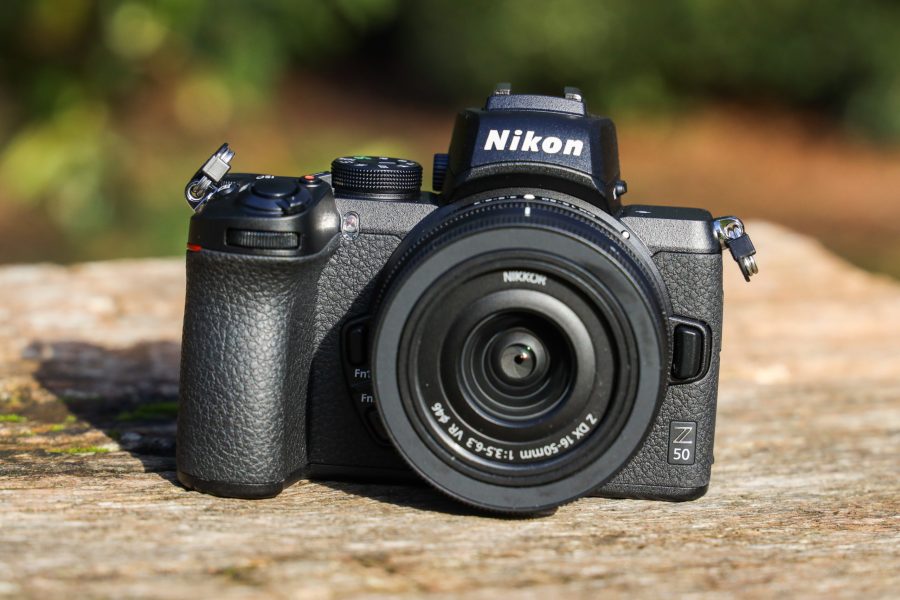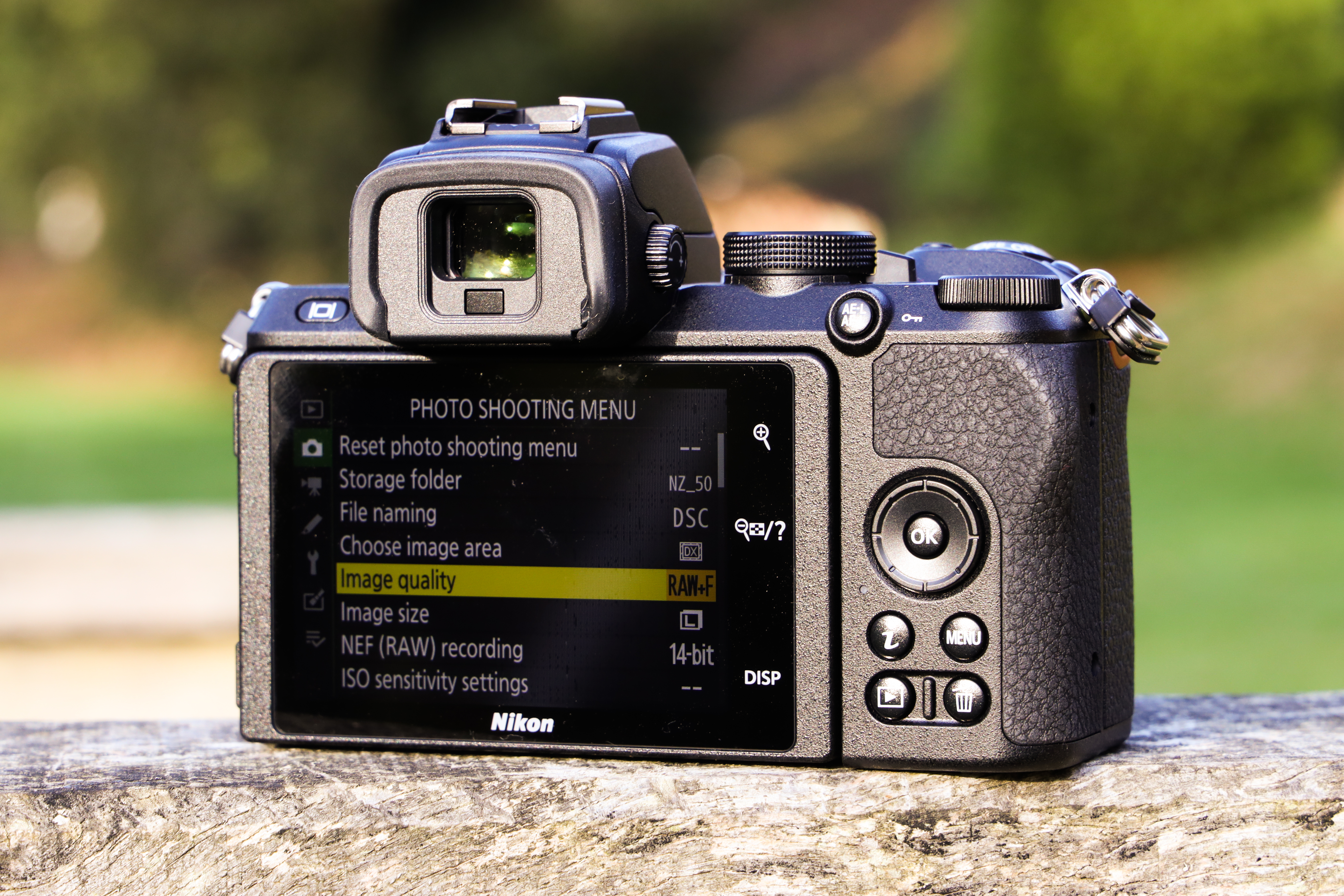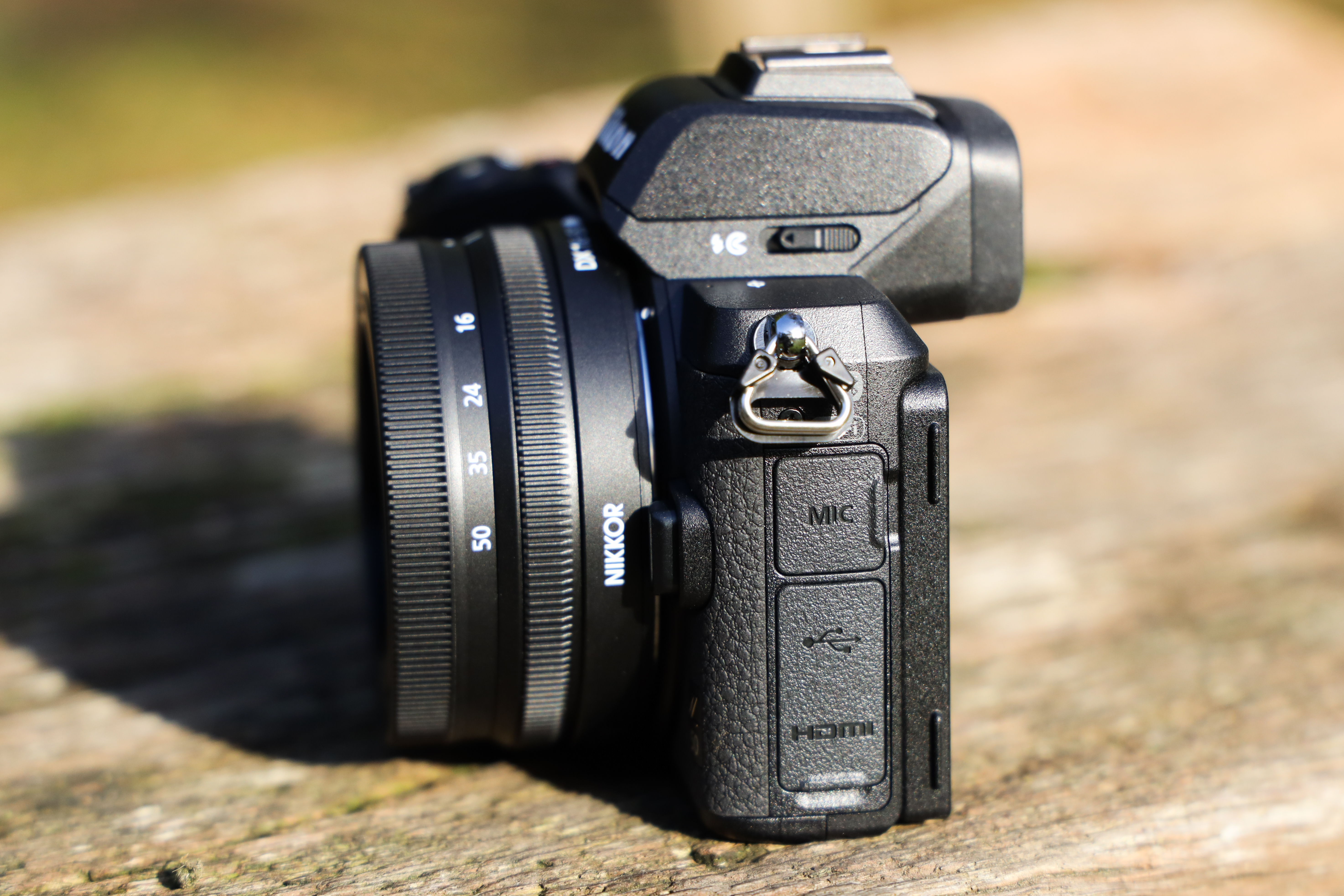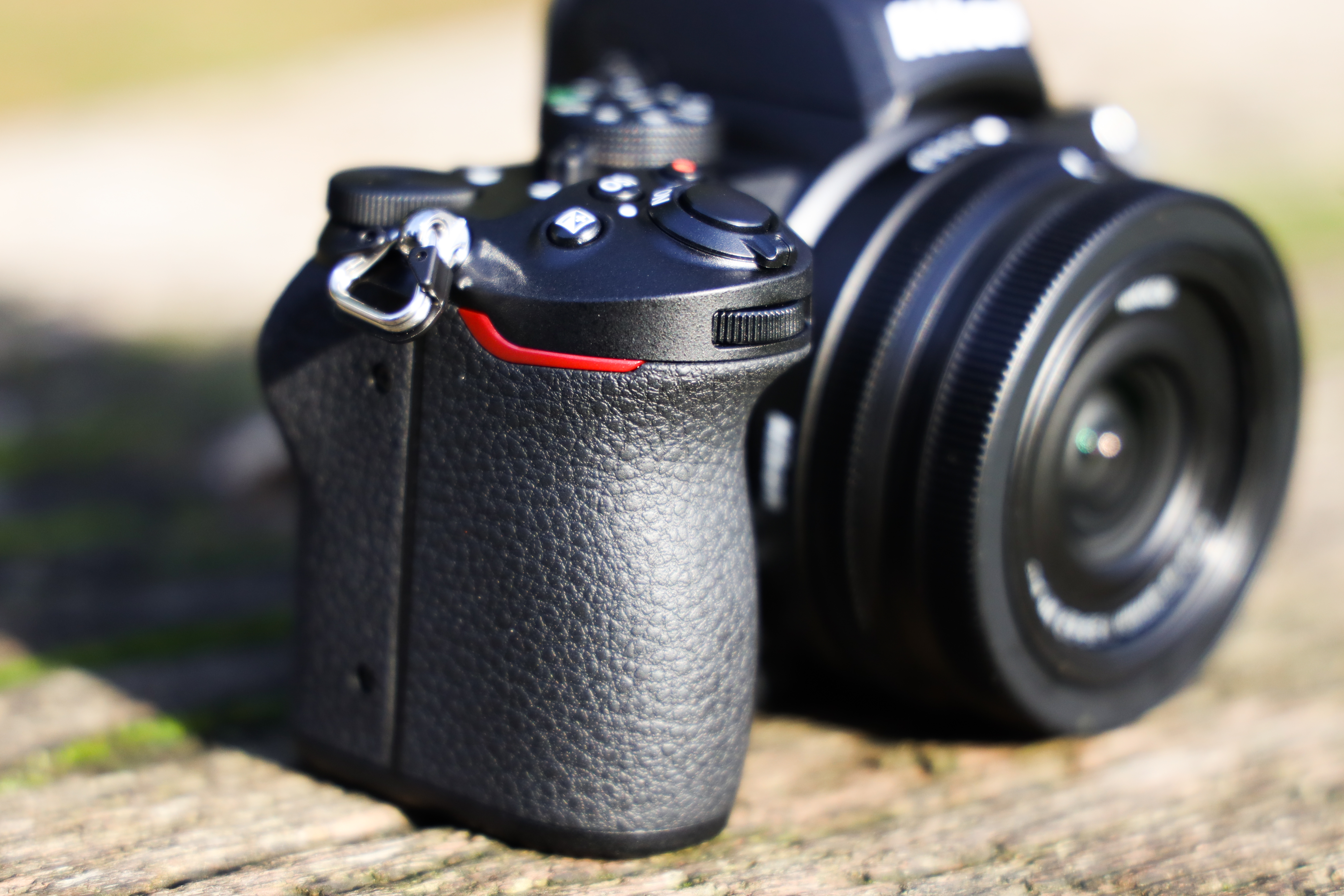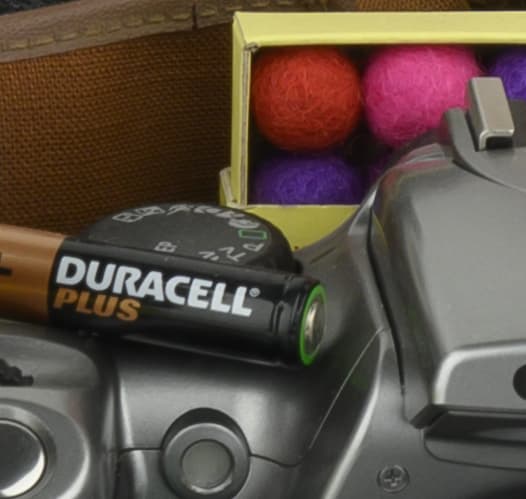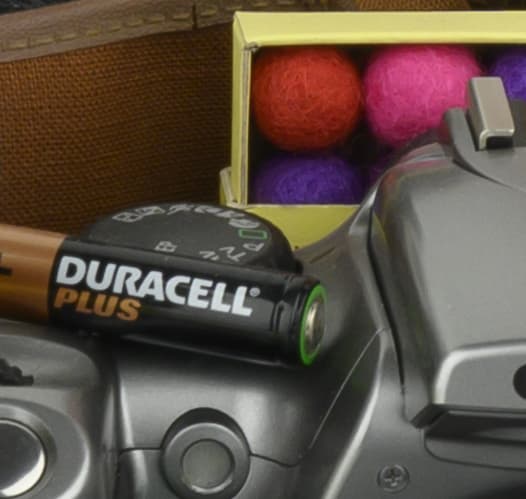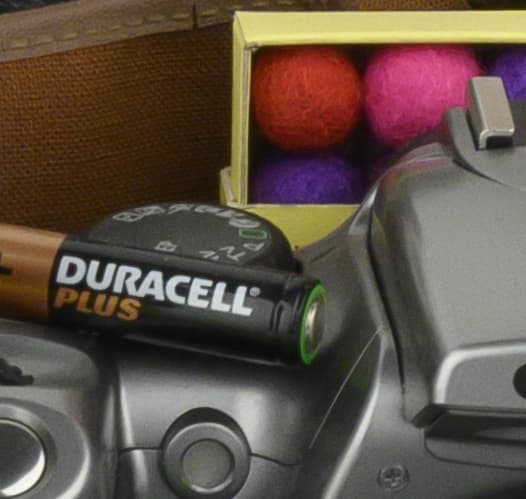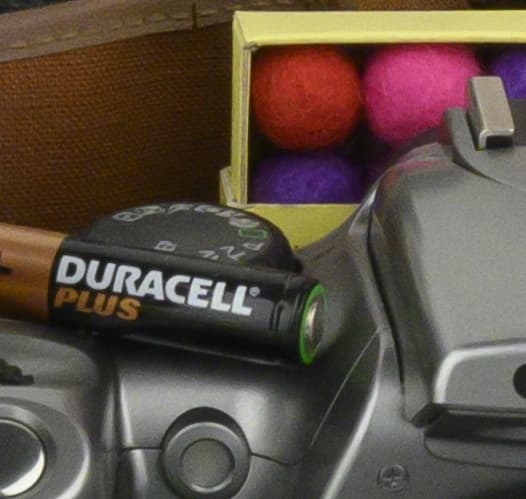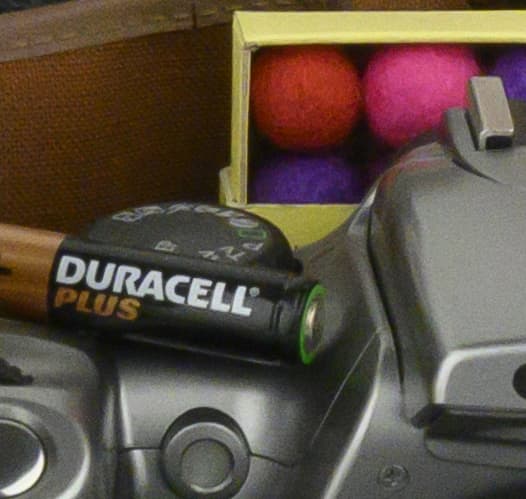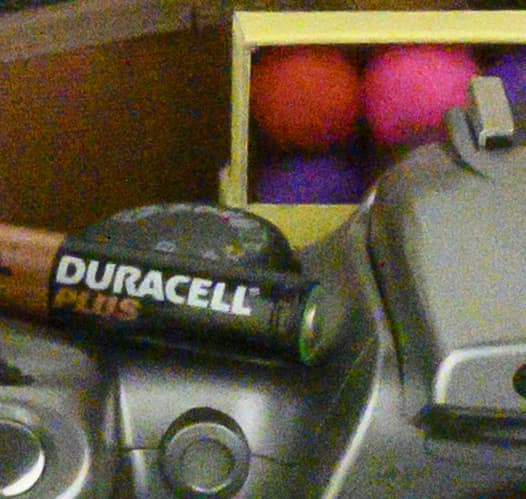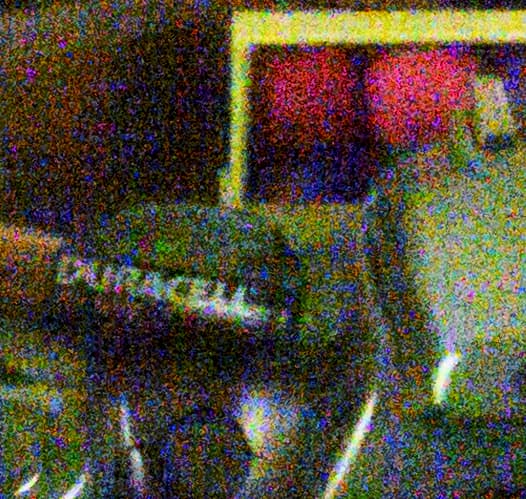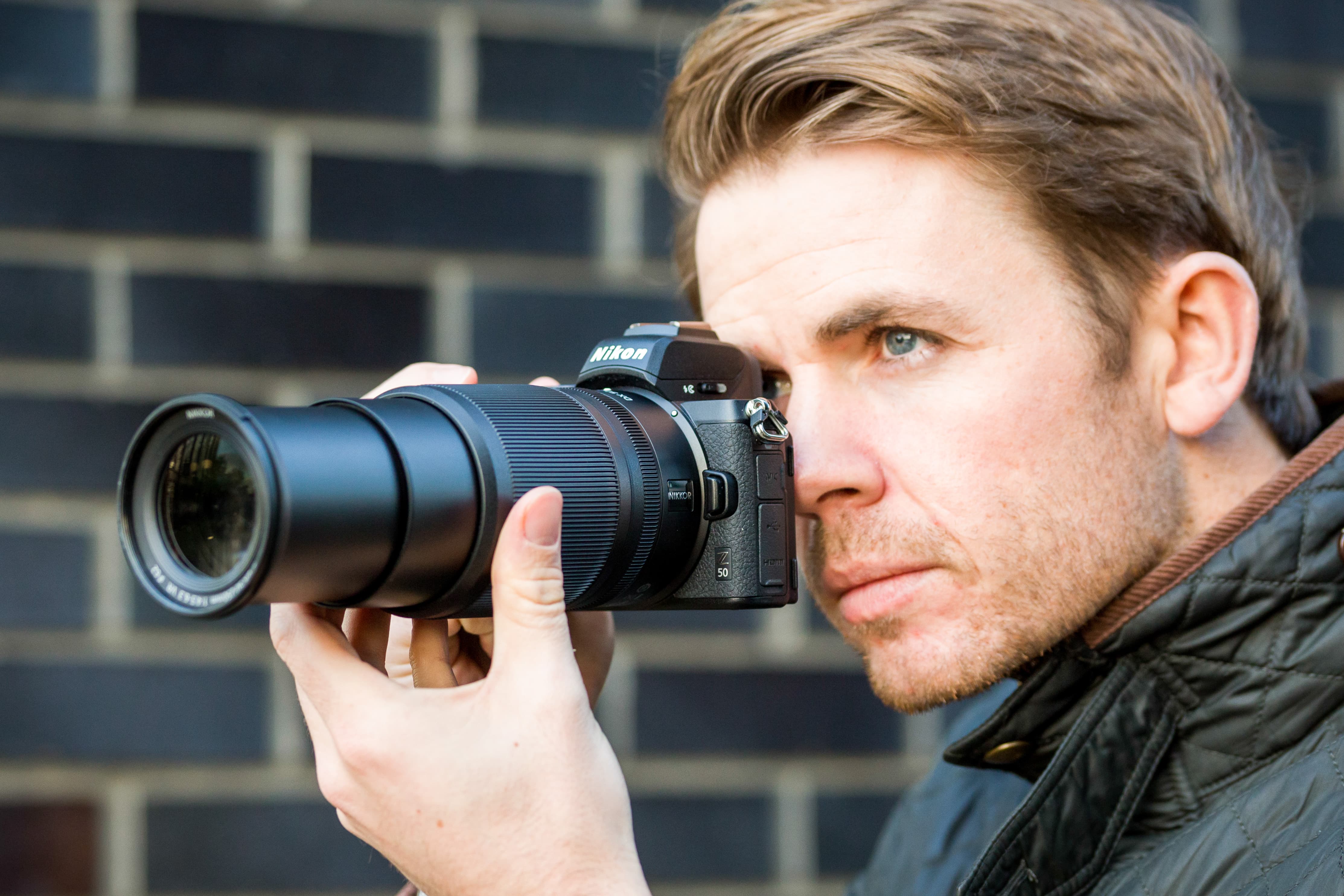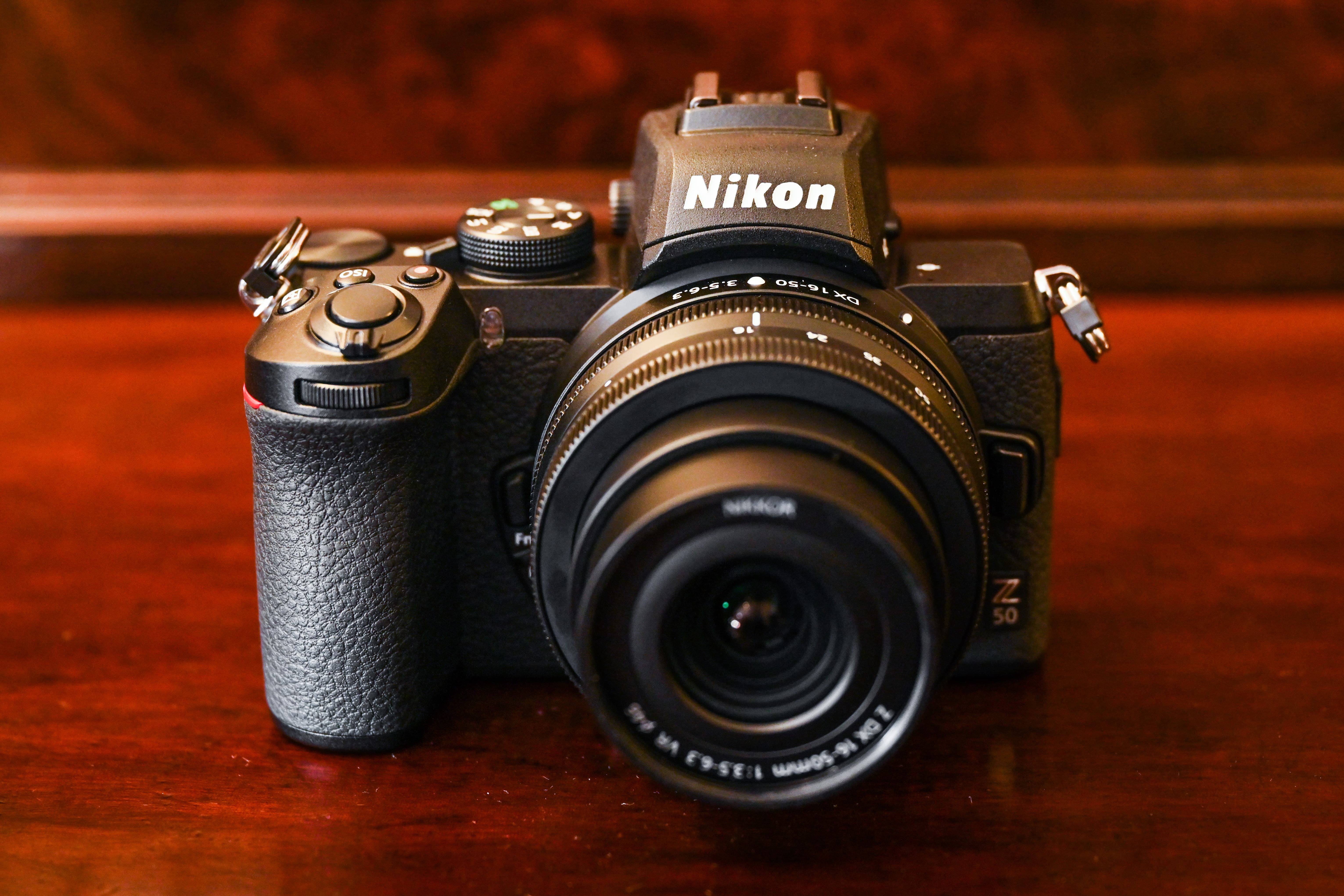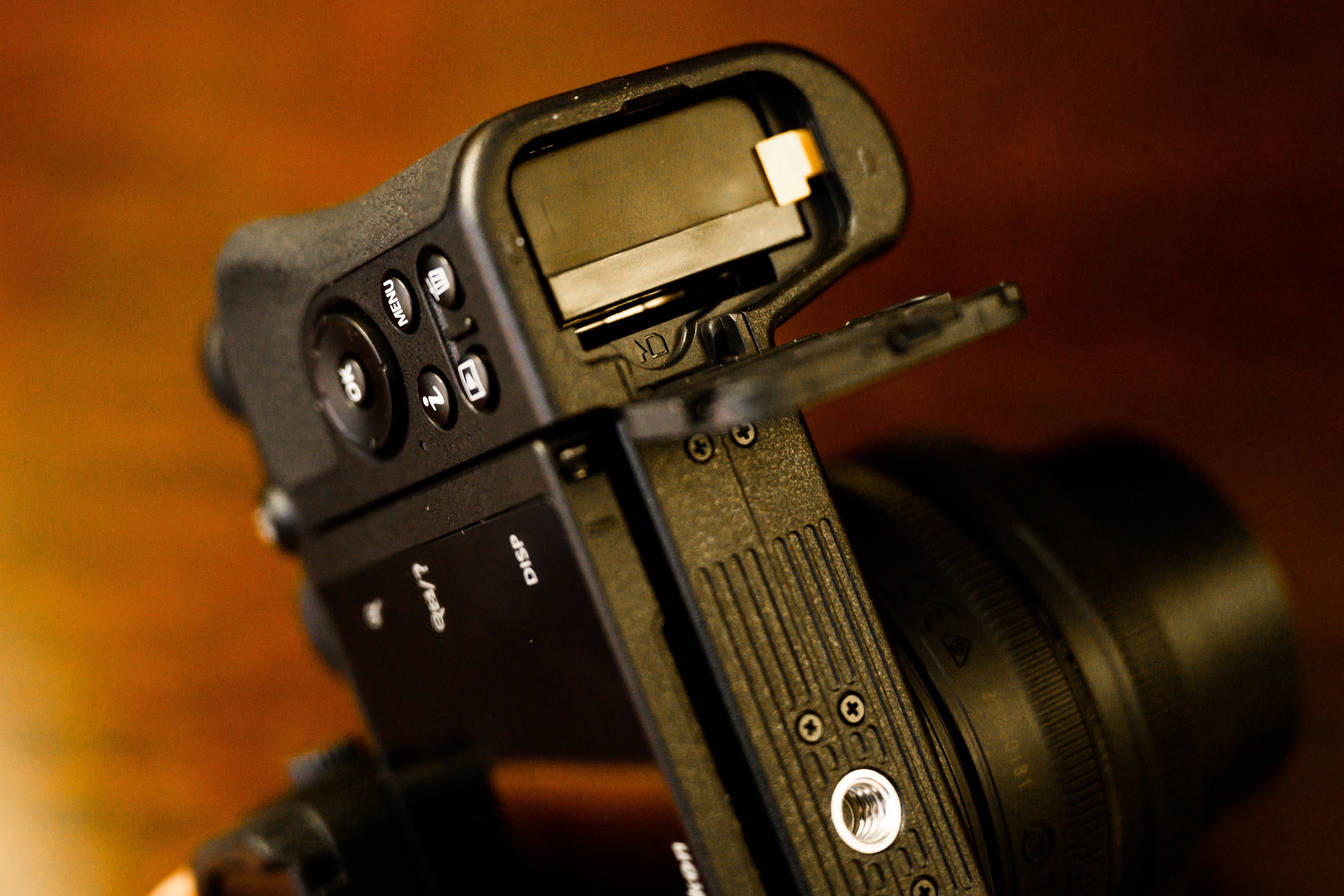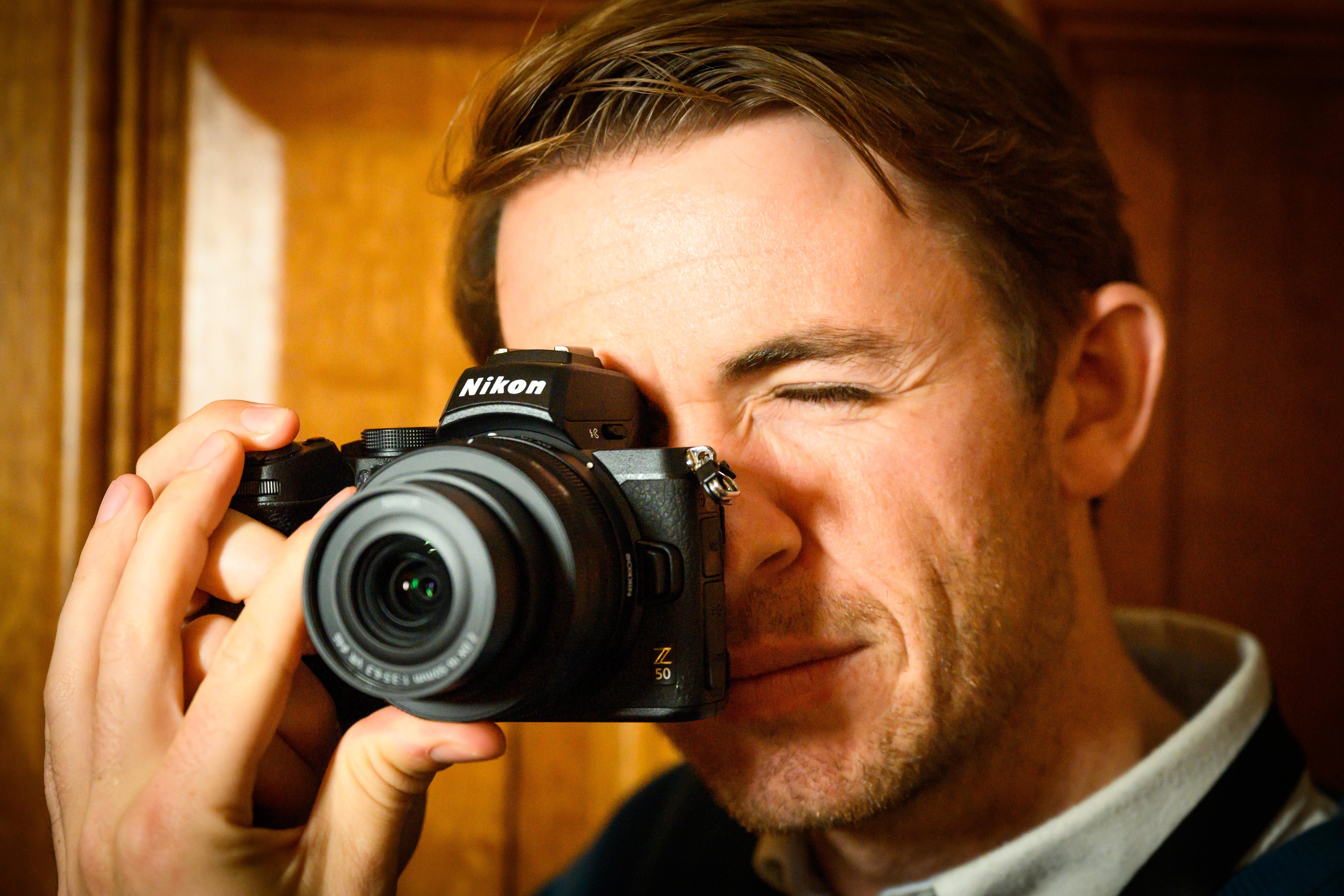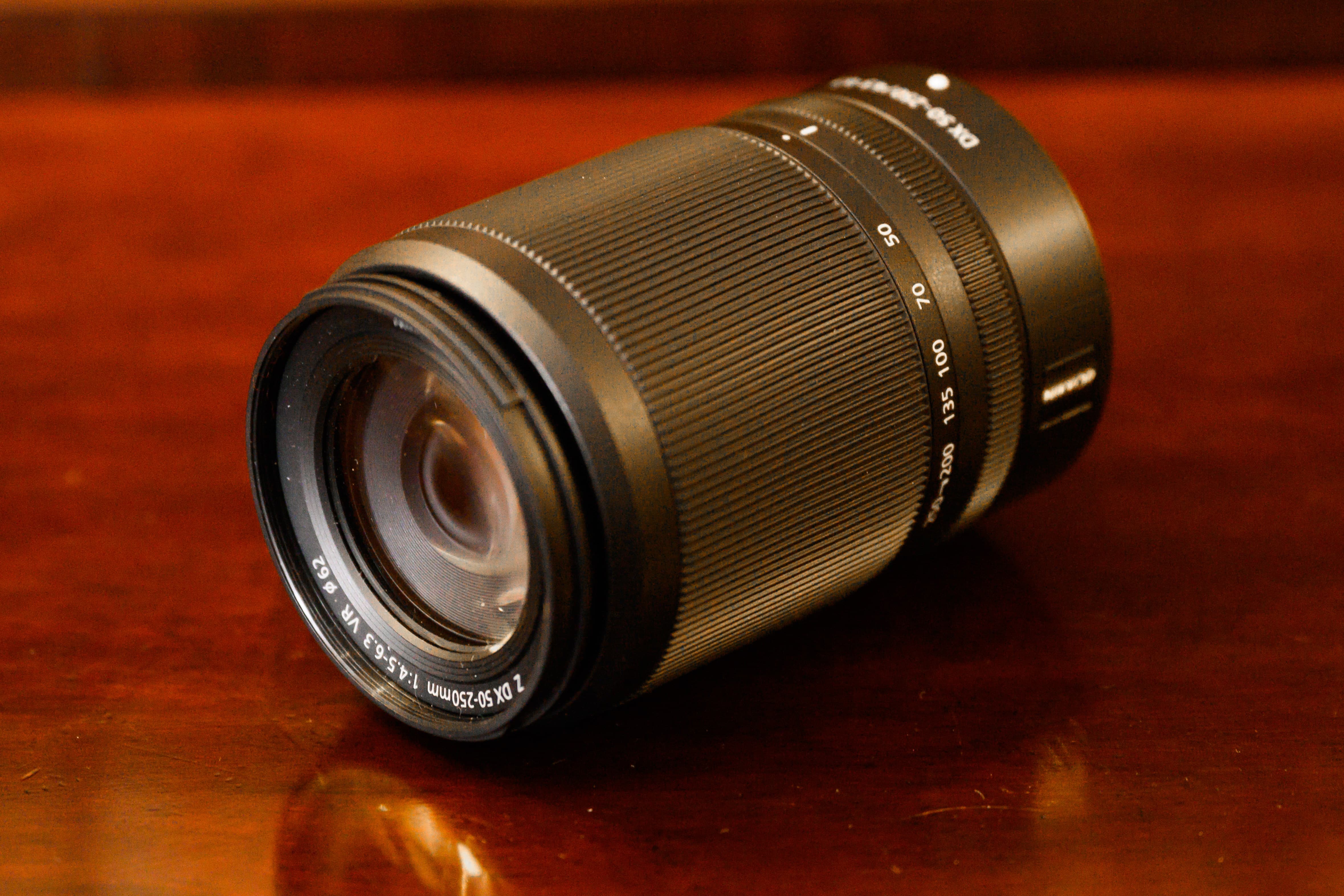When a manufacturer announces a new system, just as Nikon did towards the end of 2018 with its Z-series, it immediately brings up questions about what cameras might follow in the future. When Nikon took the wraps off a smaller, more affordable Z50 it came as something of a shock as higher resolution and sports-focused Z-series Nikon mirrorless cameras like the Z8 and Z9 were only rumours at the time.
Nikon Z50: At a glance
- $859 / £749 (body only)
- $999 / £899 (with Nikon Z DX 16-50mm f/3.5-6.3 VR)
- $1,249 / £1,259 (with Nikon Z18-140 VR Kit)
- 20.9MP APS-C sensor
- Nikon Z-mount
- 11fps continuous shooting with AE/AF
- Tilting touchscreen
- 2.36-million-dot electronic viewfinder
- 4K video at 30p
Now that there’s an updated Nikon Z50II version on the market second-hand prices are expected to come down for the Z50. Nikon’s first shot at creating a DX-format mirrorless camera with an APS-C sensor is still a great option for people looking for a budget camera. It shares the large Z mount with the Nikon Z6 and Nikon Z7 and as well as accepting new DX-format Z mount lenses, it can also be used with Nikon’s growing range of full-frame Z mount optics. And for even more options Nikon F-mount lenses can also be paired via the FTZ mount adapter.
The release of the Z 50 echoes the message that Nikon sees a bright future in APS-C cameras, especially the kind that appeals to people who like to pursue photography as a hobby and fancy a small system they can grow with that doesn’t come with the same expense of buying into full frame.
To offer a better idea of the Z 50’s positioning, it sits below the Nikon Z6 and Nikon Z7, presenting a Nikon D7500-like feature set with usability closer to that of Nikon’s advanced entry-level DSLR, the Nikon D5600. Launching the Z 50 into such a competitive area of the market was never going to be easy, but its features and price certainly imply it should give the best cameras under £1000 a run for their money.
Nikon Z50 Review: Features
Study the Nikon Z 50 from the front and you’ll notice it shares many similarities with the Nikon Z 6 and Nikon Z 7 in terms of its look and styling. Although it might not have the edge on Fujifilm’s retro-inspired Fujifilm X-T30 in terms of aesthetics, it has a purposeful design, good-sized handgrip and well thought through layout of controls.
The sensor that’s located directly behind the large Z-mount is closely related to the 20.9-million-pixel APS-C CMOS chip that’s been used before in the Nikon D500 and Nikon D7500. It has a low pass filter and teams up with an EXPEED 6 image processor that sees it shoot across a broad sensitivity range of ISO 100-51,200 (expandable to ISO 204,800).
With on-chip phase-detection pixels and a wide AF working range of -4 to +19 EV, expectations of its hybrid focusing system are high. In total there are 209 phase detection AF points, which cover 90% of the frame horizontally and 100% vertically, with the option to select every other point for faster AF point repositioning across the frame. Like the Z6 and Z7, users get five AF-area modes. These include pinpoint AF to aid with precise focusing on small subjects in the frame, single-point AF, the choice of two wide-area AF modes and an auto AF mode that works in conjunction with the face/eye detection modes when photographing portraits and groups of people.
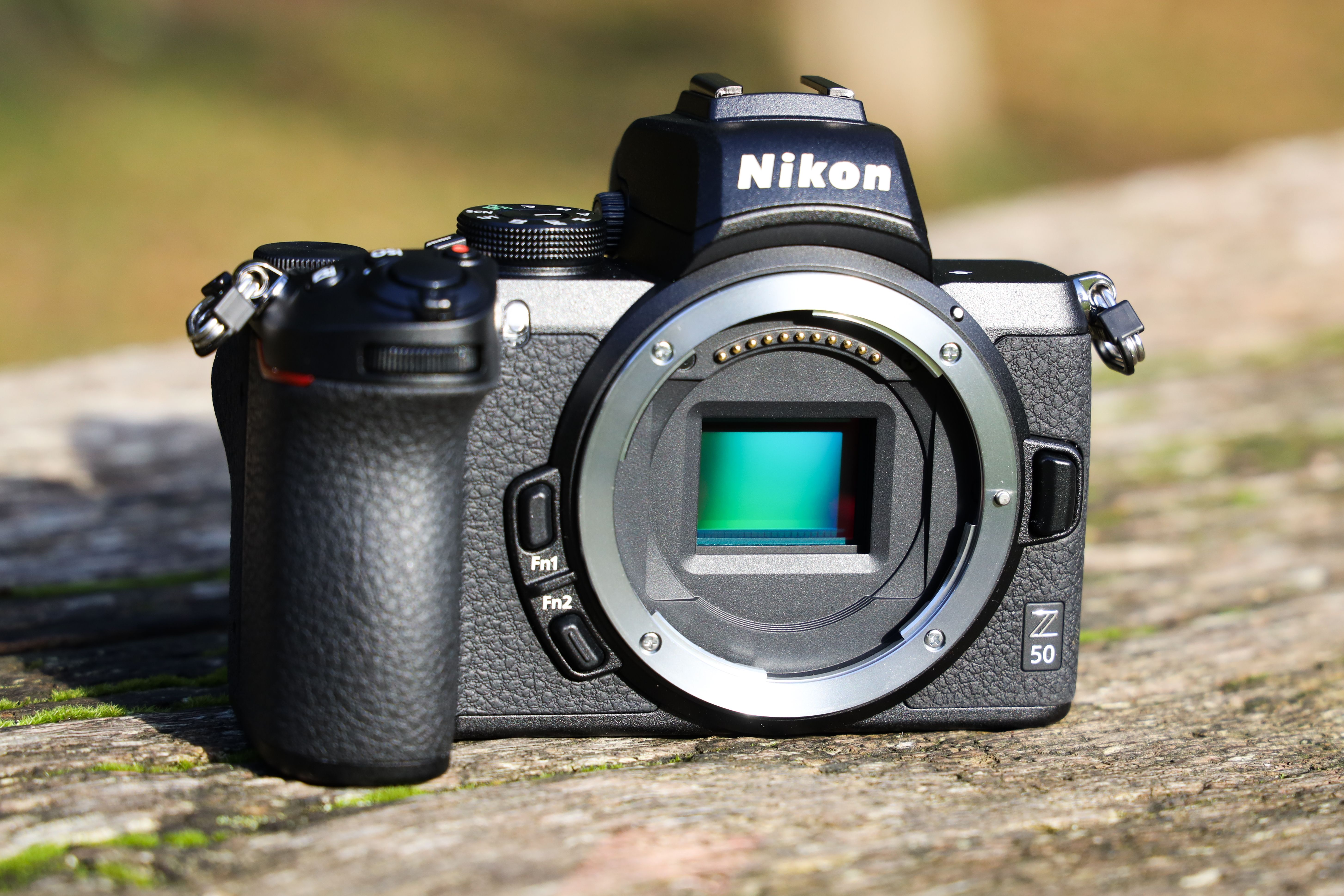
Nikon weren’t able to keep the body small and deliver the Z 50 at under £1000 without forgoing something though. That something is in-body image stabilisation (IBIS). Instead, Nikon has opted for optical stabilisation in the form of Vibration Reduction (VR) technology built into its new Z mount APS-C lenses. Rather than adding a switch to the lens, it’s controlled directly from the camera.
Shutter speed ranges from 30secs to 1/4000sec with a flash sync of 1/200sec. The Z 50’s silent shooting mode automatically engages the electronic front-curtain shutter, which true to its word eliminates the slap of the mechanical shutter when you’d like to shoot discreetly. Like the Z7 and Z6, there’s the option of manually selecting the electronic first-curtain to eliminate blurring caused by shutter shock, but this does limit the top end shutter speed to a maximum of 1/2000sec.
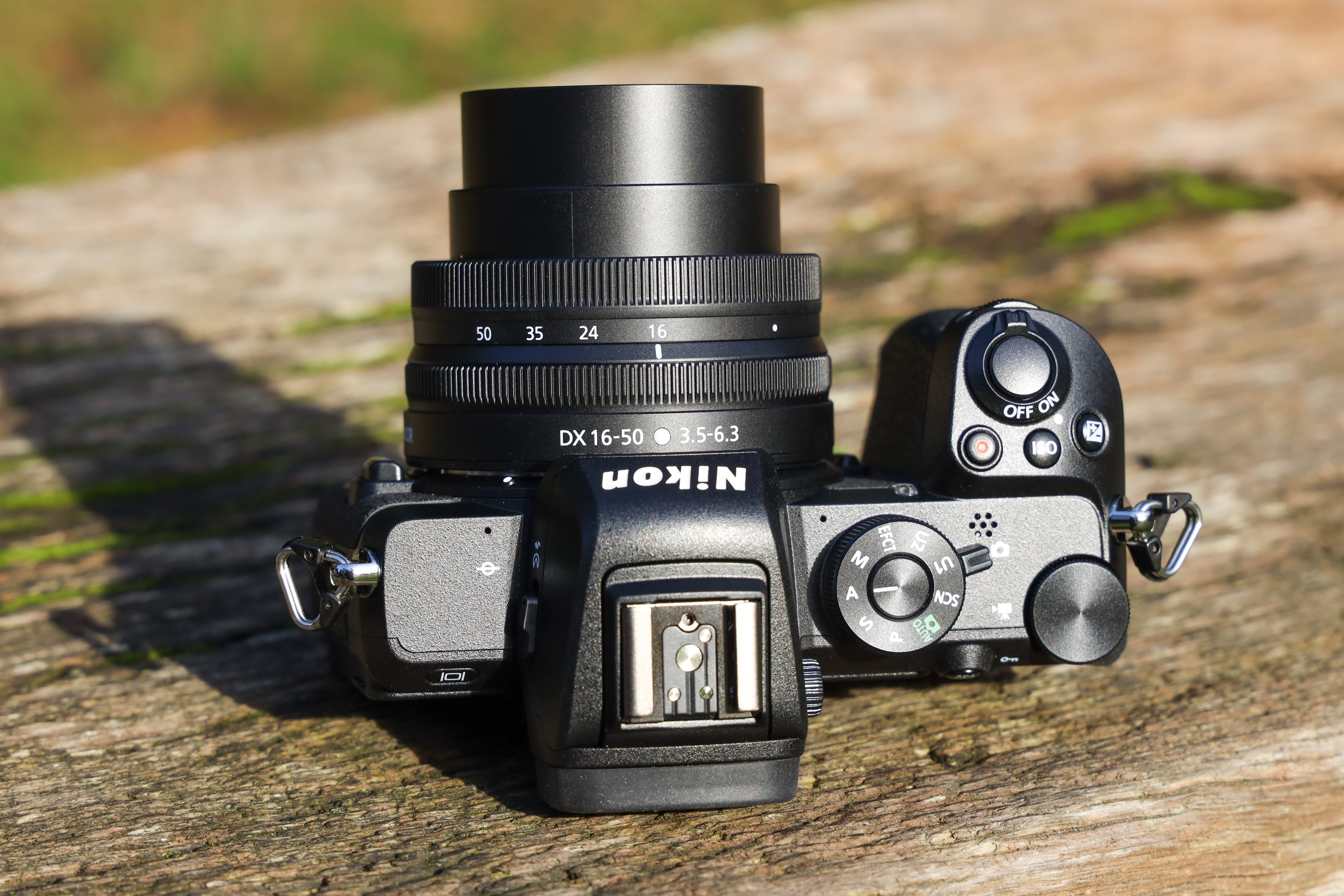
The Z 50 is no slouch when it comes to the speed it shoots at. With three settings – low-speed continuous (1 to 4fps), high-speed continuous (5fps) and high speed continuous extended (11fps), all of which can be used with continuous AF, it’s 2fps faster than the Z 7 and just 1fps slower than the Z 6.
Turning our attention to its video capability, it captures UHD 4K video at frame rates of 30,25 and 24p. Dropping the resolution down to Full HD allows you to shoot movies at up to 120fps for slow motion recording and there’s a 3.5mm input for plugging in a stereo microphone. As to be expected on a model at this level, a headphone port to monitor audio levels is left out. Videographers and those who like to focus manually will also be grateful for manual focus peaking, which has three sensitivity levels and four colours to choose from.
Rather than accepting XQD cards, the Z 50 accepts SD cards (UHS-II compatible) via a single slot that’s positioned next to the battery. An all-new rechargeable EN-EL25 battery provides power to the Z 50. This is physically smaller than the battery used by the Z6 and Z7, but provides a tolerable 300 shot stamina on a single charge. Keeping on the subject of power, the Z 50 doesn’t feature a USB Type C interface like you get on Nikon’s full frame Z-series models, though it does facilitate in-camera charging via its Micro USB port at the side for times when you might not have access to mains power. Nikon supplies a mains battery charger in the box for fast charging.
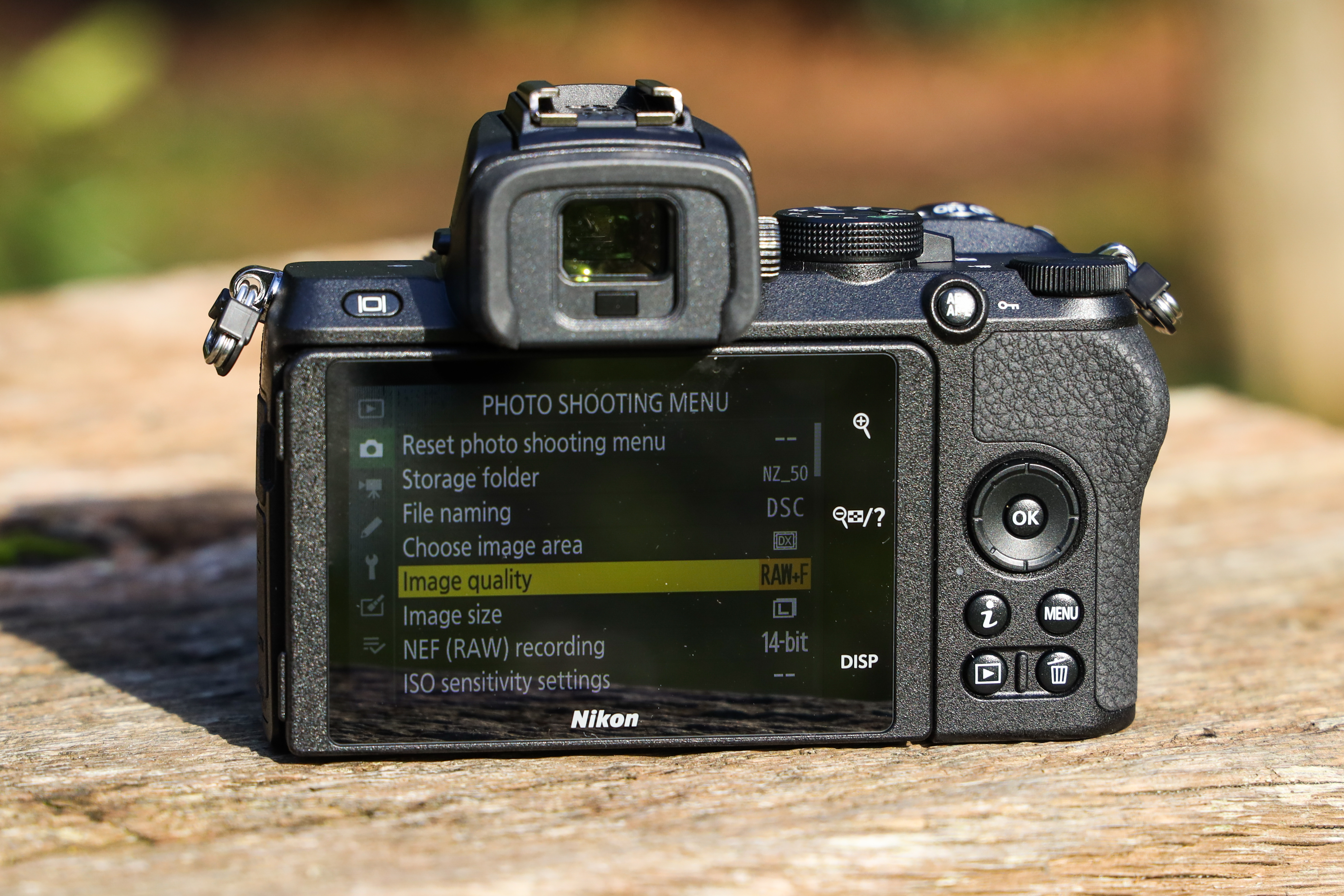
Anyone who’d like to use the Z 50 with a wired remote release will need to make sure it’s accessory port compatible – Nikon’s MC-DC2 (£35) being one such example. The alternative is to trigger the camera wirelessly using the remote shooting function within Nikon’s SnapBridge app that connects via the Z 50’s Wi-Fi or Bluetooth connectivity. Pairing the camera to a smartphone is very straightforward forward and so is the way you download images, either at their original size, or a reduced 2MP resolution. The latter helps to speed up transfer times and save on valuable storage space.
Nikon Z50 Review: DX-format Z mount lenses
Nikon has released two DX-format Z mount zooms to coincide with Z 50’s release. The Nikon Z DX 16-50mm f/3.5-6.3 VR is a compact retracting zoom that adds very little weight (135g) to the camera and is equivalent to 24-75mm in 35mm terms. Its Vibration Reduction is effective to 4.5 stops, it has a minimum focus distance of just 20cm and it accepts filters and adapters of the 46mm variety.
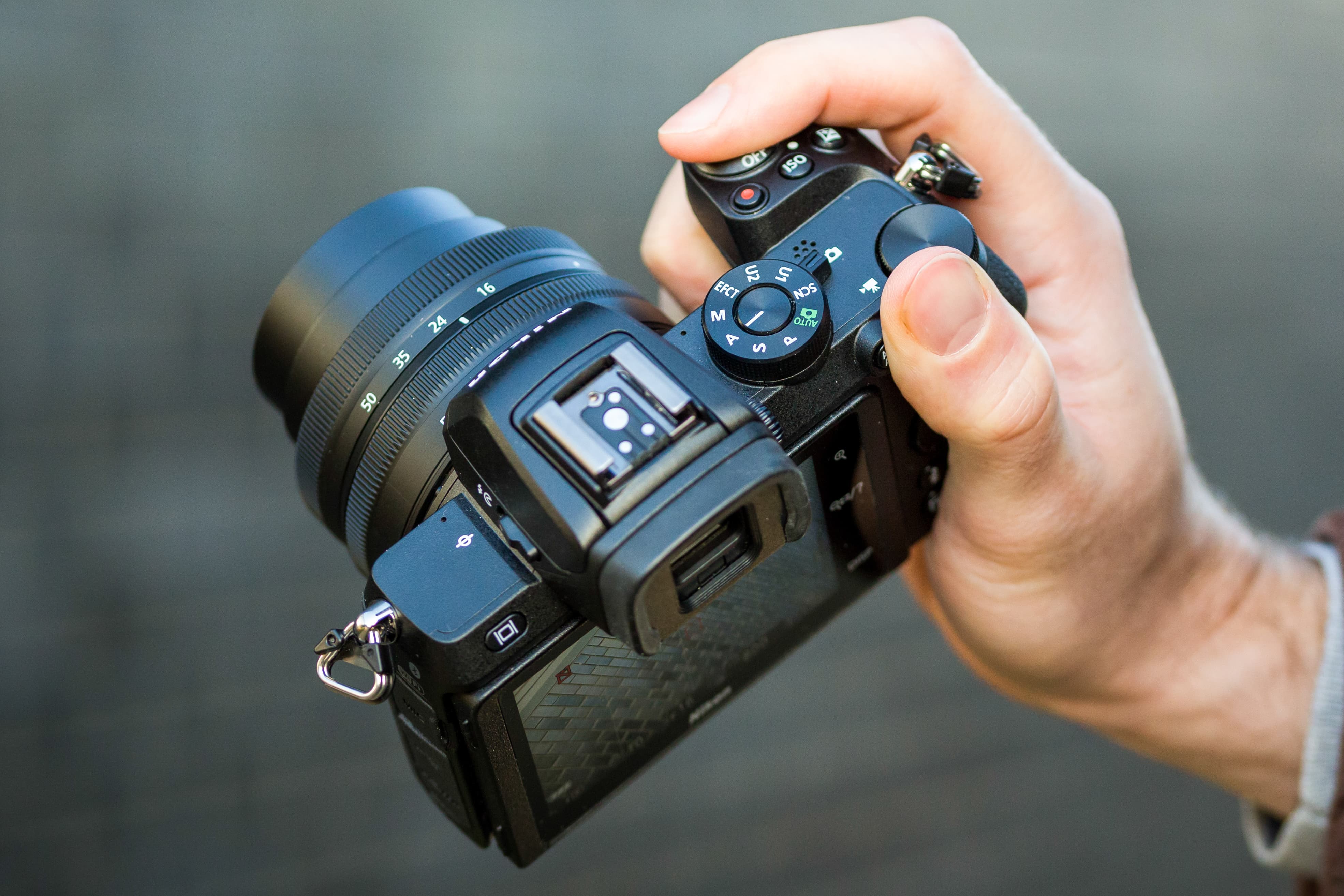
The second zoom – the Nikon Z DX 50-250mm f/4.5-6.3 VR has also been made small and light (405g). It covers a 35mm equivalent range of 75mm-375mm and has a silent control ring and plastic lens mount just like the 16-50mm zoom. Its Vibration Reduction system is effective to five stops, with filters and adapters being attached via a 62mm thread.
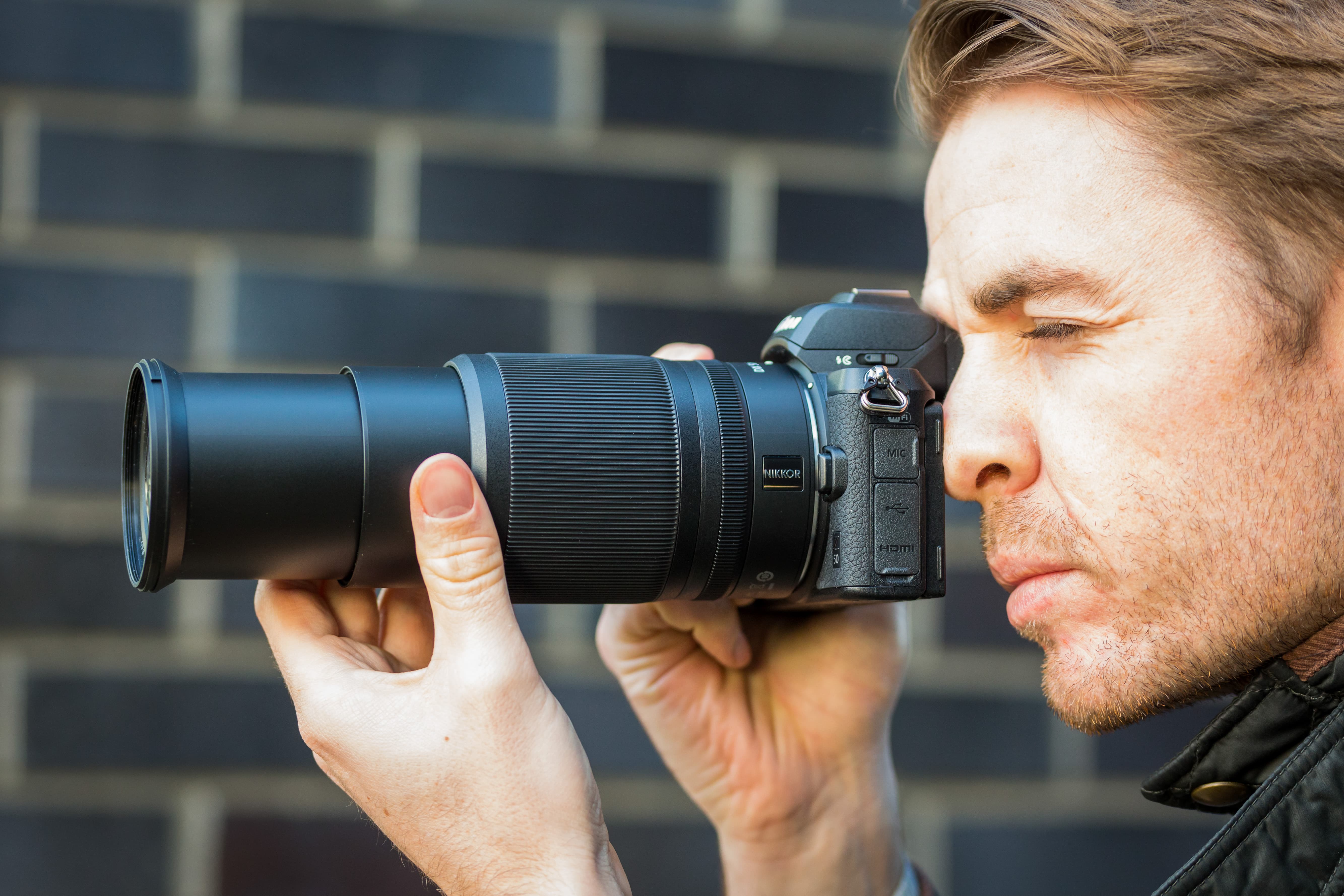
There have been three new lenses released since a 12-28mm f/3.5-5.6 DX PZ VR, 18-140mm f/3.5-6.3 DX VR and a 24mm f/1.7 DX prime. It should also be pointed out there’s nothing to stop Nikon’s full frame Z-mount lenses from being used with the Z 50, but a 1.5x crop factor does apply. The cheapest full frame Z mount lens at present is the Nikon Z 50mm f1.8 S (£349), which is equivalent to a 75mm f/1.8 prime on the Z 50.
Nikon’s FTZ mount adapter is compatible too should any Z 50 users wish to use their older F-mount lenses as they start to build up their Z mount collection.
Nikon Z50 Review: Build and Handling
Rather than starting from scratch, Nikon looked at the success of the Z 6 and Z 7’s design before setting about making its smallest Z-series camera to date. Having gained an excellent reputation for the way the Z 6 and Z 7 fit and feel in the hand, the pressure was on to ensure the Z 50 offered a similarly pleasing handling experience.
Nikon has done a sterling job of ensuring the handling is right up there as the best of any small mirrorless model on the market. Some cameras just feel great from the moment they’re picked up and the Z 50 is one of them. Photographers with large hands or those who work in cold climates with thick gloves will prefer the feel of the Z 6/Z 7’s deeper, more muscular grip, but for it’s target audience you can’t fault it.
Part of the Z 50’s excellent feel comes down to the fact it has a magnesium-alloy top and front chassis that gives it added strength and robustness. Nikon says the camera does have some level of weather resistance, though it isn’t made to the same weather resistant standard as the Z 6 or Z 7, which are built to the same standard as the rugged Nikon D850.
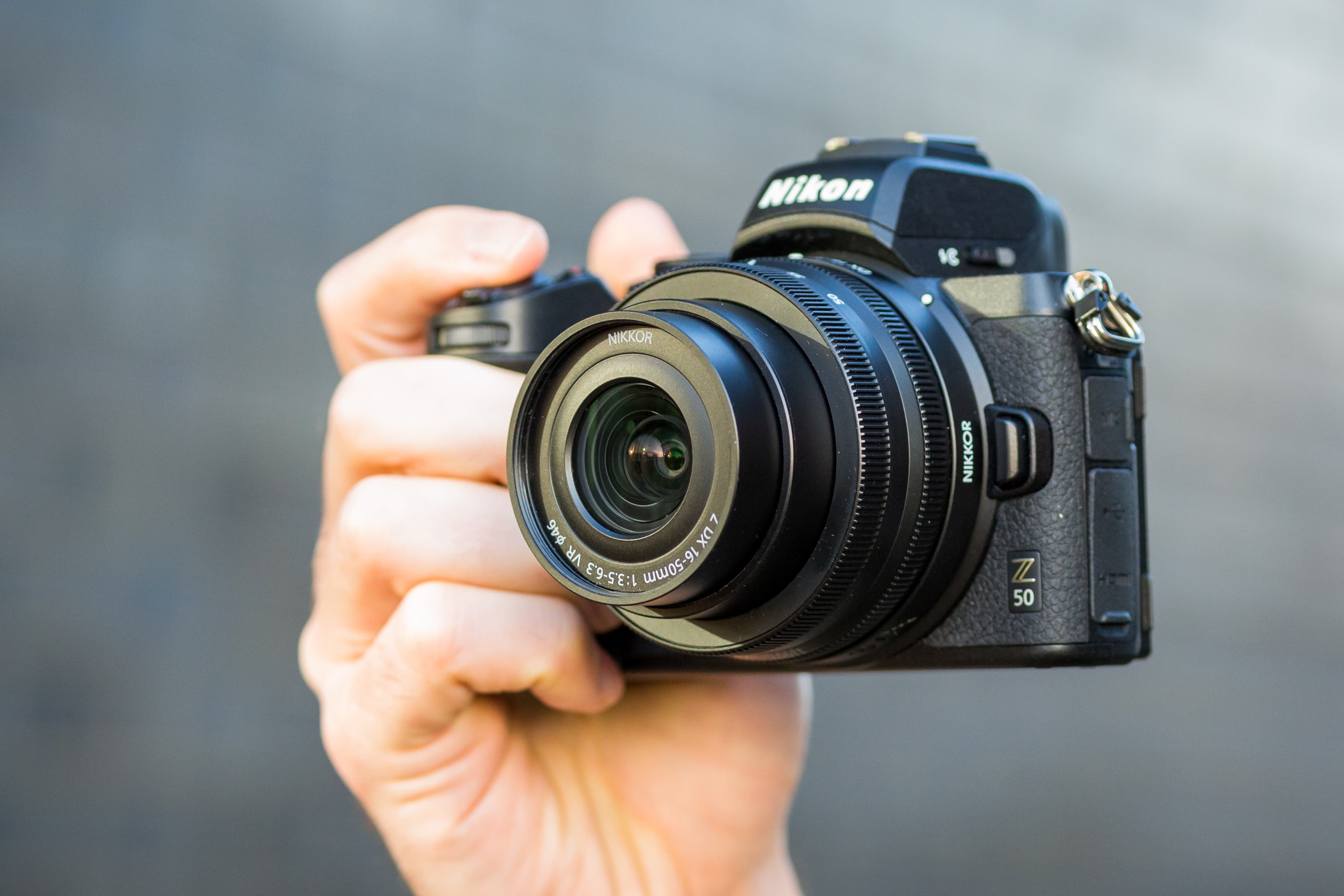
Viewed on its own, it’s hard to gauge the Z 50’s size. As soon as you view it alongside the Z 6 or Z 7, you can clearly see the difference and make out that it’s much leaner. One of the things we’re particularly fond of is its rubberised grip. This stretches right around the side to its prominent thumb rest at the rear, making it very comfortable and secure to hold in just your right hand when working with lightweight lenses.
Compared to Nikon entry-level DSLRs, it’s also dinky enough to fit it into an average sized jacket pocket with the 16-50mm lens attached and retracted. Better still, the 50-250mm zoom fits snugly into a jacket pocket too, meaning you can head out and shoot without having to lug a bag around – something that will appeal when you’d like to travel light on day trips, city breaks or short getaways.
The smaller body has had its say in the arrangement of its buttons and controls. The mode dial shifts across to the right where the top plate LCD screen is on the Z 6/Z 7. It’s easily rotated using your thumb when your hand is wrapped around the grip, but without a lock I found it can be inadvertently nudged or knocked. Around it you’ll find a switch that’s used to enter video mode or revert to shooting stills.
Behind the shutter button, which in typical Nikon fashion is encircled by the on/off switch, you get three dedicated buttons to start/stop video recording, change ISO or adjust exposure compensation. It’s also good to see a front command dial complimenting the rear command dial, which has always been lacking on Nikon’s entry level DSLRs.
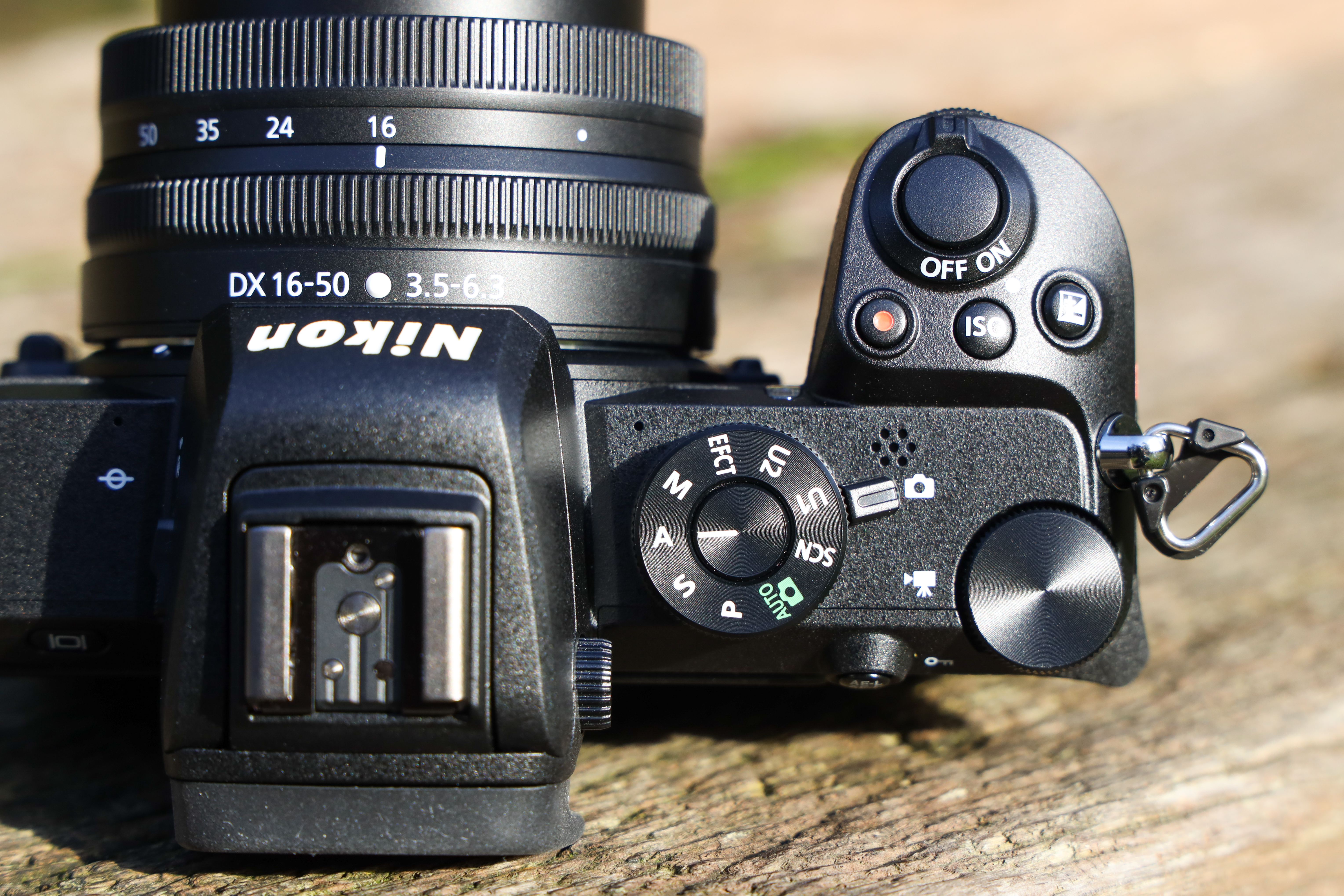
With limited space at the rear of the camera, Nikon has opted to add permanent touch buttons down the side of the touchscreen. These are used to magnify images on screen and cycle through the various display views, which include a histogram and electronic level. Below the thumb rest, Nikon has opted for a four-way controller in favour of a joystick and the i menu button just below it is very useful for pulling up frequently used settings and saves time navigating the main menu. This i menu is customisable just like the two functions buttons you’ll find at the front of the body around the lens mount, which again are inherited from the Z 6/Z 7.

Switching our focus to the new DX-format Z-mount lenses, you’ll notice a clear difference in build quality between them and Nikon’s more expensive full-frame Z-mount lenses. You’ll immediately pick up on the fact they have a much more plasticky finish, but by choosing to use plastic instead of metal, such as around the lens mount, it has allowed them to be made incredibly lightweight – the Nikkor Z DX 16-50mm f/3.5-6.3 VR for example adds a mere 136g to the weight of the Z 50.
Although it’s fair to say the build quality of the DX lenses don’t match the build quality of the Z 50’s body, it’s good to see Nikon introducing control rings to them, which can be customised to control focus, aperture, ISO or exposure compensation on the fly.
Nikon Z 50 Review: Viewfinder and Screen
A 0.39in, 2.36-million dot electronic viewfinder is what we’d expect to find on a camera at the Z 50’s price point. It doesn’t match the 3.6-million-dot resolution of Nikon’s Z 6 or Z 7 cameras, but displays a crisp image, with very good rendition of fine detail in a scene. It displays all the shooting information you could wish for against a black background on strips above and below the preview image, however don’t expect these to rotate when you switch between landscape and portrait format.
If you tend to shoot with the viewfinder raised to your eye most of the time you can use the button on the top left shoulder of the body to change it from automatically switching between the viewfinder and screen to viewfinder only. Likewise, you can do the same if you’d prefer to lock out the EVF and only view the screen.
The 3.2in, 1040k-dot screen on the Z 50 is a little different to the ones we’ve seen on Nikon cameras before. It can be tilted down beneath the camera as well as up for low-angle shooting in the landscape format. It’s clearly designed with those who like to take the occasional handheld selfie in mind, but its use as a selfie screen is hindered if the camera is mounted to a support, be it a tripod or monopod.
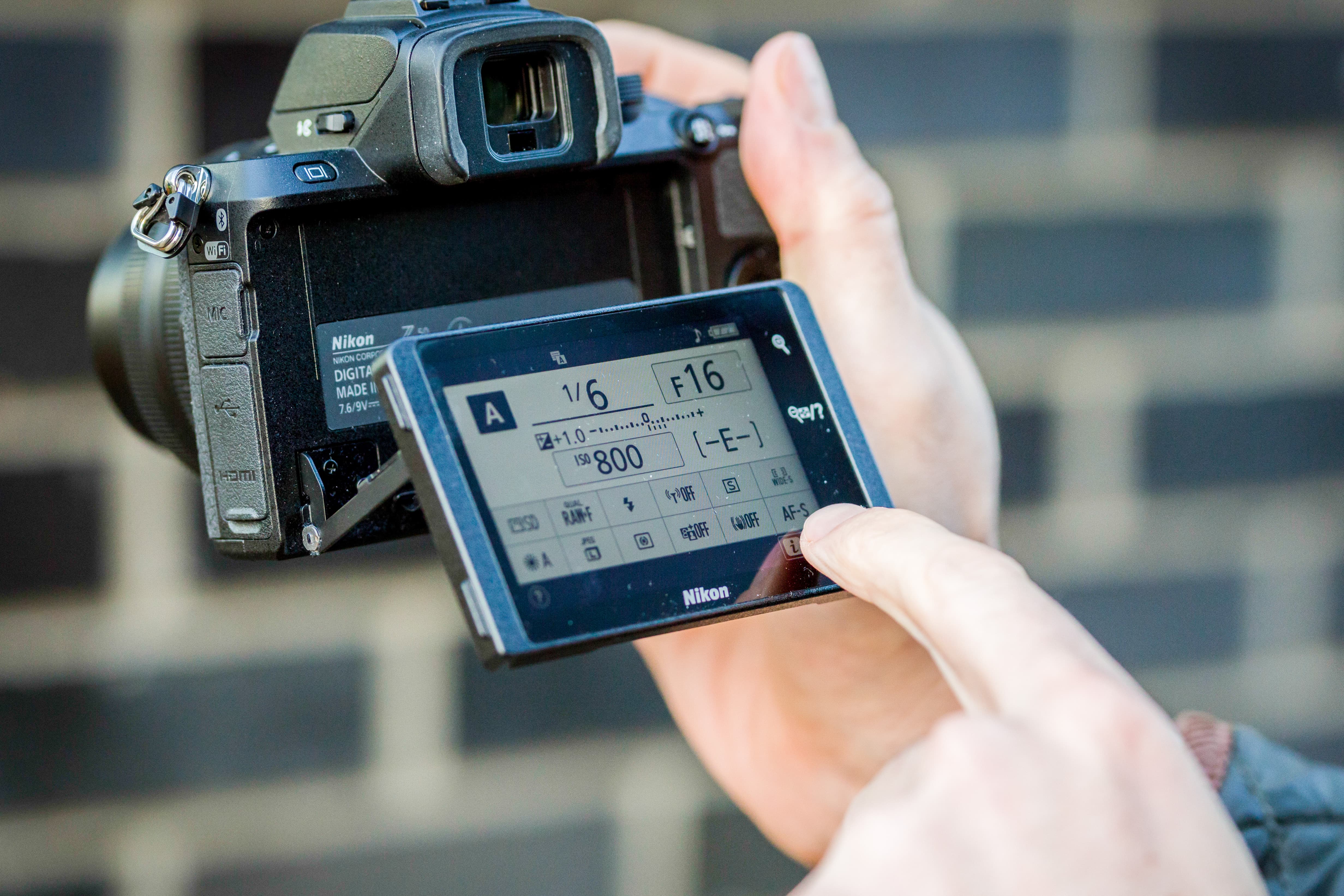
Its response to light touches is on par with today’s smartphones and for photographers who shoot at night, the option to switch the information display from dark on light to light on dark to minimise the glare of the screen is invaluable. Spraying the screen with water to simulate raindrops and then navigating the menu by touch revealed moisture has no affect on the response of the touchscreen.
Nikon Z50 Review: Performance
It’s only when you get out and put a camera through its paces do you start to find out its strengths and foibles. The good news with the Nikon Z 50 is that the pros far outweigh any cons, of which there are very few.
I started my testing by trying out the new permanent touch buttons, which have the same responsiveness as the screen and can be tapped or held to inspect images in playback or magnify the Live View feed. My only criticism is that they’re not illuminated, which would help when working at night. The fact they’re also totally flat means they’re not particularly easy to locate when your eye is raised to the viewfinder. A small little dimple would solve this.
The only other points I’d make regarding the Z 50’s ergonomics is that the mode dial could do with being a tad stiffer. On more than one occasion I found it set to the wrong mode after pulling it from my jacket pocket. I’d have also liked the option to assign silent mode to the function buttons, however it is possible to set this to the quick-to-access i menu.
The electronic viewfinder really impressed on test. Comparing it to the EVF on the Sony A6600, which just so happened to be in the office for review at the same time, revealed it displays a sharper image, with clean edges and no nasty jaggies or colour-moire.
The viewfinder doesn’t feel cramped or small, but the main menu could be presented a bit larger in the EVF and users will notice it doesn’t use the full width of the display. Very importantly, both the screen and EVF faithfully display exposure, white balance and colour so you can be confident that what you’re seeing is a true representation of how the image will look.
For day-to-day shooting users can rely on the Z 50’s matrix metering mode to deliver accurate exposures. For times when I wanted to precisely meter for the highlights, I found highlight-weighted metering particularly effective. The great thing about this metering mode is it takes the colour of the light source into account to prevent overexposure, even in highlights that feature a strong colour cast.
Auto white balance has come on a long way from Nikon DSLRs of the past, which had a tendency to render a rather cool feel to images straight out of the camera. On the Z 50 you get three auto white balance modes, with A0 reducing warm colours, A1 keeping the overall atmosphere of a scene and A2 accentuating warm lighting colour. For photographers who primarily shoot outdoors and want to resolve colour as the natural eye sees it, Natural light auto white balance mode is the recommended choice.
The optical stabilisation that’s built into Nikon’s new DX-format lenses suppresses shake remarkably well to the point that with the 50-250mm f/4.5-6.3 lens attached I achieved sharp handheld shots at 1/15sec at the long end of the zoom. Coupling the 16-50mm f/3.5-6.3 kit zoom to the Z 50 and repeating a similar test at the wide end resulted in sharp images down to 1/5sec.
The big thing to factor in here of course is that when the Z 50 is used with full frame Z-mount lenses without VR built-in, there’s no form of compensation at all. This puts greater demand on pushing the ISO higher so fast shutter speeds can be used to compensate for shake that comes at the expense of increased noise. When the camera is being used handheld to shoot subjects that move quickly or unpredictably, you’ll want to remember to switch the optical VR from Normal to Sport mode to ensure the image in the viewfinder remains stable and smooth as possible.
My experience of the Z 50’s focusing is that it’s on a similar playing field as Nikon’s full frame Z-series cameras, This is hardly surprising given that it shares the same image processor and hybrid phase-detection/contrast AF arrangement, albeit with fewer on-sensor AF points. Subjects were quick to snap into focus in single AF mode when shooting outdoors in bright lighting conditions, but both DX zooms weren’t averse to showing signs of a little hunting when used in low-light scenarios. A bright green AF beam can be used to help shed some extra illumination on nearby subjects in low-light.
The Z 50’s eye detection is very quick to detect eyes looking towards the camera, even at long distances when the face isn’t particularly big in the frame. You can choose which eye you’d prefer it to focus on using the four-way controller, although there were instances when it failed to recognise eyes of a model looking off camera. Eye detection can be used in continuous AF, however it’s not available when shooting movies so you have to make do with Face Detection. Those hoping to capture sport, action or wildlife sequences will find the combination of continuous AF and burst shooting at up to 11fps yields a high success rate of sharp shots provided the most appropriate AF-area mode for the subject is chosen.
Loaded with a fast SDXC UHS-II memory card capable of a 280MB/s read and 250MB/s write speed, the Z 50 succeeded to rattle out 37 12-bit raw files at 11fps before its buffer was reached. Switching the image quality across to Fine JPEG followed by Normal JPEG saw the number of recorded frames increase to 92 and 99 respectively. With 14-bit raw selected the fastest the Z 50 shoots at in high-speed continuous extended is 9fps. With 14-bit Raw and Fine JPEG selected, users can expect to record 30 frames at 9fps before it requires a breather, rounding off what is a respectable buffer performance.
Nikon’s SnapBridge app didn’t have the best of reputations in its infancy, but after many updates it’s now much better. Once setup, the always-on Bluetooth connection and Auto link successfully sends images across to SnapBridge one at a time. Wireless transmission continues in the background even when the camera is switched off and for the quickest transfer speeds you’ll want to select the auto download 2MP setting. On average it takes about 15 seconds between firing the shutter and the image you’ve taken appearing in the app.
Entering the remote function automatically fires up the cameras Wi-fi to form a connection. The control you get from the app is fairly basic, but exposure parameters, white balance and the position of the focus point can be adjusted in addition to setting up a self-timer and changing the shooting mode. Moving forward I’d like to see Nikon relay the customised i menu options directly to the app. This would allow users to control things as silent mode, metering mode and optical VR straight from your smartphone without having to repeatedly go back to the camera.
Nikon Z50 – Image quality
As things stand, Fujifilm currently offers the highest resolution cameras in the APS-C market. The Fujifilm X-T30 shares the same 26.1-million-pixel X-Trans CMOS 4 sensor as the flagship Fujifilm X-T3. Though the Nikon Z 50’s chip can’t quite match its closest rival in terms of the fine level of detail that recorded, the 20.9-million-pixel APS-C CMOS sensor it uses is not to be sniffed at. As we discovered when we tested the D500 and D7500, which essentially utilise same sensor without on-chip phase-detection pixels, high ISO performance is worthy of merit. Users can confidently push up to around ISO 12,800 before noise starts to severely degrade image quality.
Nikon Z 50 Review: Resolution
The Z 50 resolved as much detail from our resolution charts as we could realistically expect from a 20.9MP sensor. Shooting in JPEG does tend to suppress artefacts at the expense of slightly lower resolution though, so to capture the finest detail we’d recommend shooting in raw. At its lowest ISO setting of 100 the Z 50 resolves around 3,400l/ph, which is upheld to ISO 400 before starting to drop to 3,200l/ph at ISO 800. Its high ISO capability is impressive, with 3,000l/ph and 2,700l/ph being recorded at ISO 6400 and ISO 12,800 respectively. Detail starts to go downhill beyond this point with 2,600l/ph recorded at ISO 25,600 and 2,400l/ph at ISO 51,200. The big drop to 1900l/ph and 1800l/ph at ISO 102400 and ISO 204800 emphasises that the extended settings are barely worth having.
From the crops below, multiply the number below the lines by 200 to calculate the resolution on lines per picture height. These were shot with the Nikon Z 50mm f1.8 S lens.
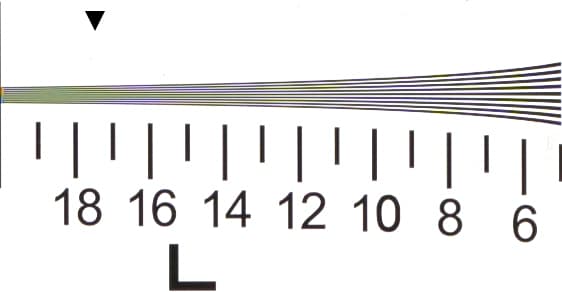
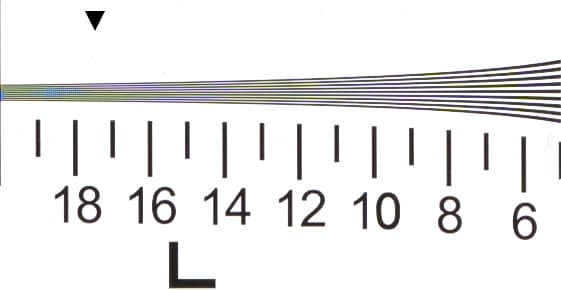
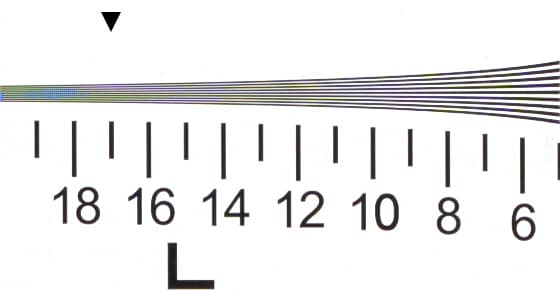

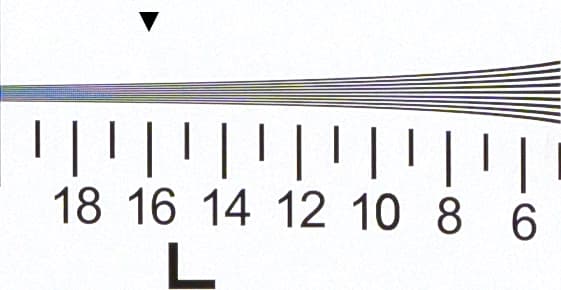
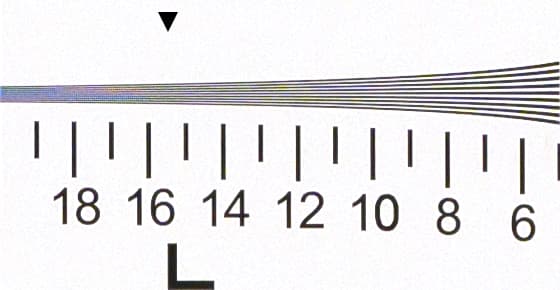
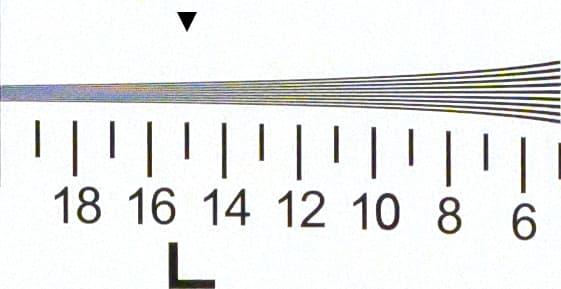
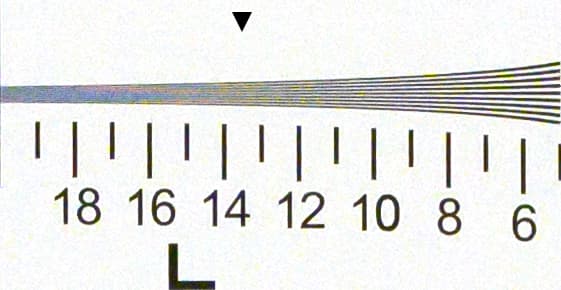


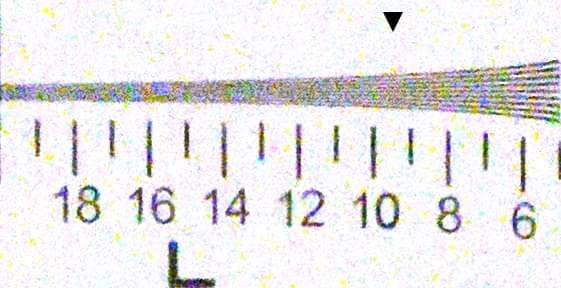

Nikon Z50 Review: Noise
Looking at the way the sensor performs all the way through its sensitivity range tells us it handles noise extremely well to the point that shots captured at ISO 1600 are almost as flawless as those captured at ISO 100. It’s possible to trace a little noise starting to creep in at ISO 3200 and ISO 6400 when you inspect images at 100% magnification, but both settings are very useable. If you’re prepared to apply some noise reduction in post processing, very acceptable results can also be achieved at ISO 12,800 and ISO 25,600 at a push. By the time you reach ISO 51,200 colour noise and a green tinge to shots becomes more pronounced. The extended ISO 102,400 and ISO 204,800 settings produce such poor results they’re worth ignoring.
Nikon Z50 – Verdict
Rather than rushing into the mirrorless market, Nikon has stuck to its strategy of releasing a pair of full-frame mirrorless cameras and building up a selection of full-frame Z mount lenses before turning its focus towards APS-C. Nikon has been quite clever in their approach and by choosing to preserve the look, styling and excellent handling of the Z 6 and Z 7 in a lighter, more compact body, they’ve created a sublime little camera in the form of the Z 50 that’s a delight to use, produces very fine images and presents great value when you consider it can be bought with a lens for under £1000.
One of the biggest hurdles Nikon has had to overcome is how to make the Z 50 compact enough that it offers a size and weight advantage over the company’s APS-C DSLRs, while ensuring it’s not too fiddly to operate. By forgoing IBIS and rethinking the positioning of some controls, Nikon has struck the balance just right. Its deep, well-sculpted handgrip provides the best handling experience of any sub £1000 APS-C mirrorless camera. A joystick would have been a well-received, however this isn’t expected at the Z 50’s price point and suggests Nikon could be holding this feature back for a more advanced DX-format mirrorless model in the future.
The excellent electronic viewfinder and responsive touchscreen enhance the enjoyable shooting experience, and with 11fps continuous shooting and a responsive autofocus system, the Z 50 rarely feels out of its depth when challenged by fast paced subjects. Whether it’s used to capture stills or snippets of video, the Z 50 produces satisfying results. That being said, I would like to see Nikon introduce Eye AF to video mode, much like Sony has on its latest cameras.
So what’s not to like? The only thing really holding back the Z 50 at the moment is the limited number of DX Z-mount lenses. The 16-50mm and 50-250mm kit lenses are perfectly adequate for amateurs and their retractable designs compliment the size of the camera when space is of a premium or you want to travel light. What’s really needed to make the Z 50 as big a hit with enthusiasts is a much wider range of lenses including some fast and affordable primes.
Just as Nikon blew us away with the introduction of the Z 6 and Z 7, they’ve done the same with the Z 50. It’s a marvellous little camera that you can’t fail to fall in love with when you’re using it. We’d choose it ahead of the Sony A6400 and Panasonic Lumix G90 in a heartbeat, but Fujifilm’s X-T30, which can be picked up for £839 (body only) or cheaper with cash back offers, just about has the edge on the Z 50 in terms of price and the range of lenses that are currently available. It’s going to be very interesting to watch how Nikon’s DX format mirrorless system evolves after such a successful start.
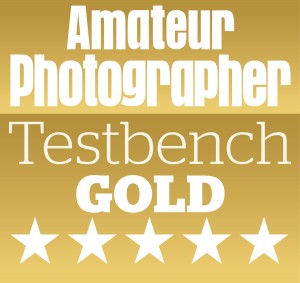
Find the best Nikon mirrorless cameras, or have a look at the best Nikon Z-Mount lenses.
Nikon Z50 – Hands-on First Look
Following on from the success of its Z 6 and Z 7 full-frame mirrorless cameras, Nikon has expanded its Z-series range by announcing a smaller, more affordable model. The new Nikon Z 50, which uses the large Z mount and accepts Nikon’s FTZ mount adapter and F-mount lenses, is Nikon’s first attempt at creating a DX-format mirrorless camera equipped with an APS-C size sensor.
Despite being smaller and lighter than the Z 6 and Z 7, it manages to successfully uphold the style and feel of the company’s Z system while offering Nikon D7500-like features with usability closer to that of Nikon’s advanced entry-level DSLR, the D5600.
This exciting news will be of great interest to budding amateurs and keen enthusiasts who’d like a smaller and lighter system for considerably less than it costs to make the jump up to a full frame Z-series model. To answer the question of what lenses the Z 50 will use, Nikon has also announced a pair of new DX-format Z mount zooms. We’re also glad to report that the Nikkor Z lens roadmap has been updated too, giving us a good indication of how the lineup of lenses will evolve in the near future.
Nikon Z 50: Features
The 20.9MP APS-C CMOS sensor the Nikon Z 50 employs is closely related to the one found inside Nikon’s D500 and D7500, albeit with on-chip phase-detection and an AF working range that sees it focus down to -4EV. The sensor teams up with the same EXPEED 6 image processor that you’ll find in the Z 6 and Z 7, however unlike Nikon’s pair of full-frame models, the Nikon Z 50 doesn’t feature in-body image stabilisation (IBIS).
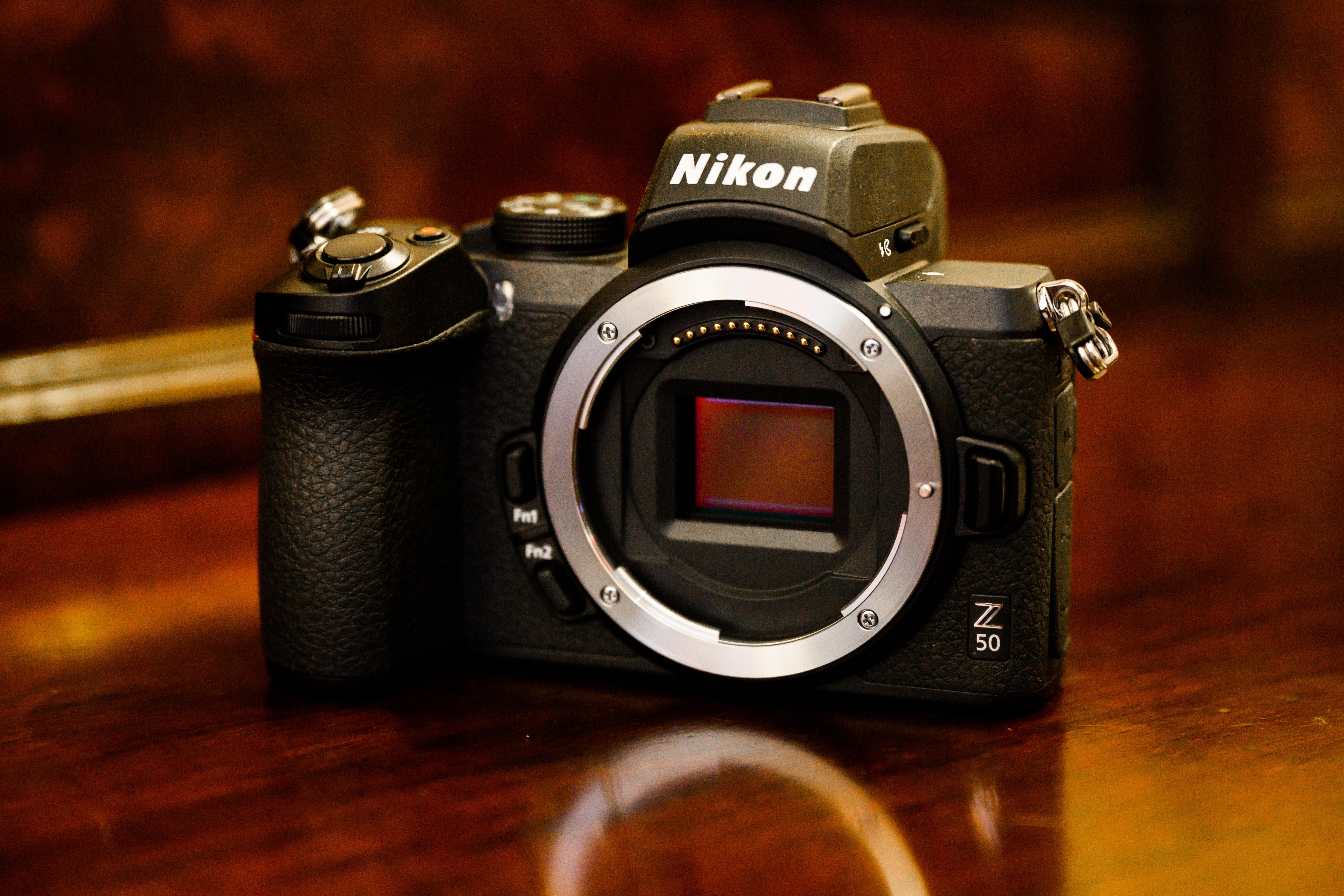
Instead, Nikon has opted for optical stabilisation in the form of it Vibration Reduction (VR) technology built into its new Nikkor Z APS-C lenses. Forgoing IBIS might be looked upon as a missed opportunity, but by leaving it out it has allowed Nikon to make the Z 50 extremely small while ensuring it hits the sweet-spot in terms of affordability to the consumer.
The sensitivity of the sensor is extendable from ISO 100-25,600 to a maximum of ISO 51,200. It can rattle out a continuous burst of shots at up to 11fps with full AF/AE tracking, making it Nikon’s fastest enthusiast camera to date. As for the hybrid autofocus system, this is made up of 209 phase detection AF points that cover 90% of the frame horizontally and 100% vertically.
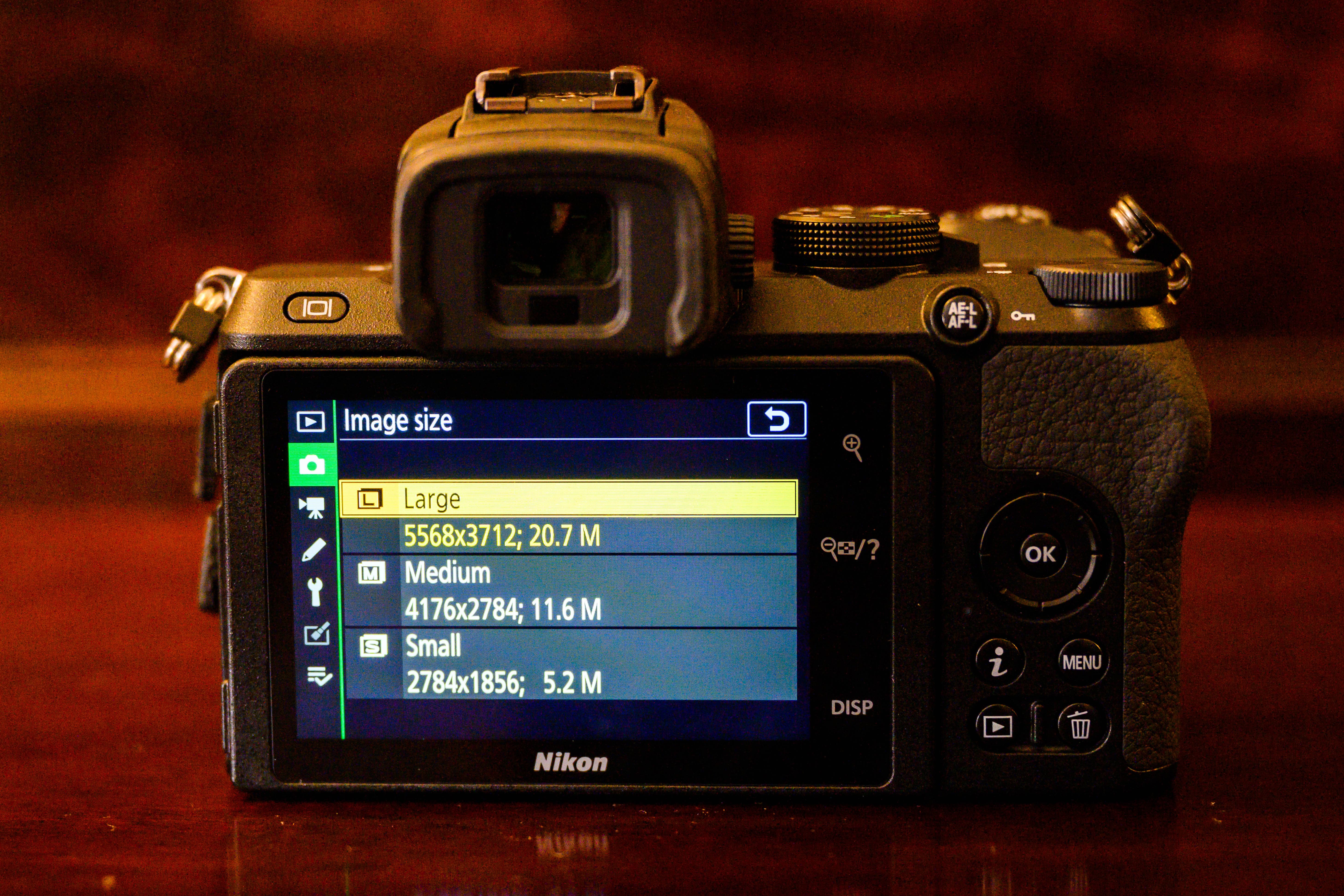
Eye and face detection AF are both available, as are 20 in-camera creative filters, a time-lapse mode and 4K video recording at 30 frames per second, alongside Full HD at up to 120fps. A stereo microphone input is located at the side, however a headphone port to monitor audio levels is left out.
Looking at the rear, the Nikon Z 50 showcases a 3.2in, 1040k-dot touchscreen, which tilts down beneath the camera. Nikon say this has been designed for today’s selfie-shooters, however its use as a selfie screen will be somewhat restricted if the camera is mounted to any form of support, be it a tripod or monopod.
Beside the screen Nikon has added permanent touch buttons that can be used to quickly inspect images in playback mode and change the display view – something we haven’t seen on a Z-series camera before. Above the screen there’s a 2.36-million dot electronic viewfinder that displays comprehensive shooting information against a black background on strips above and below the preview image.
Rather than accepting XQD cards, the Nikon Z 50 accepts an SD card (UHS-II compatible) via a single slot that’s positioned next to the battery. An all-new rechargeable EN-EL25 battery provides power to the Z 50. It’s physically smaller than the battery used by the Z 6 and Z 7 and we’re told we can expect to shoot approximately 300 shots on a single charge.
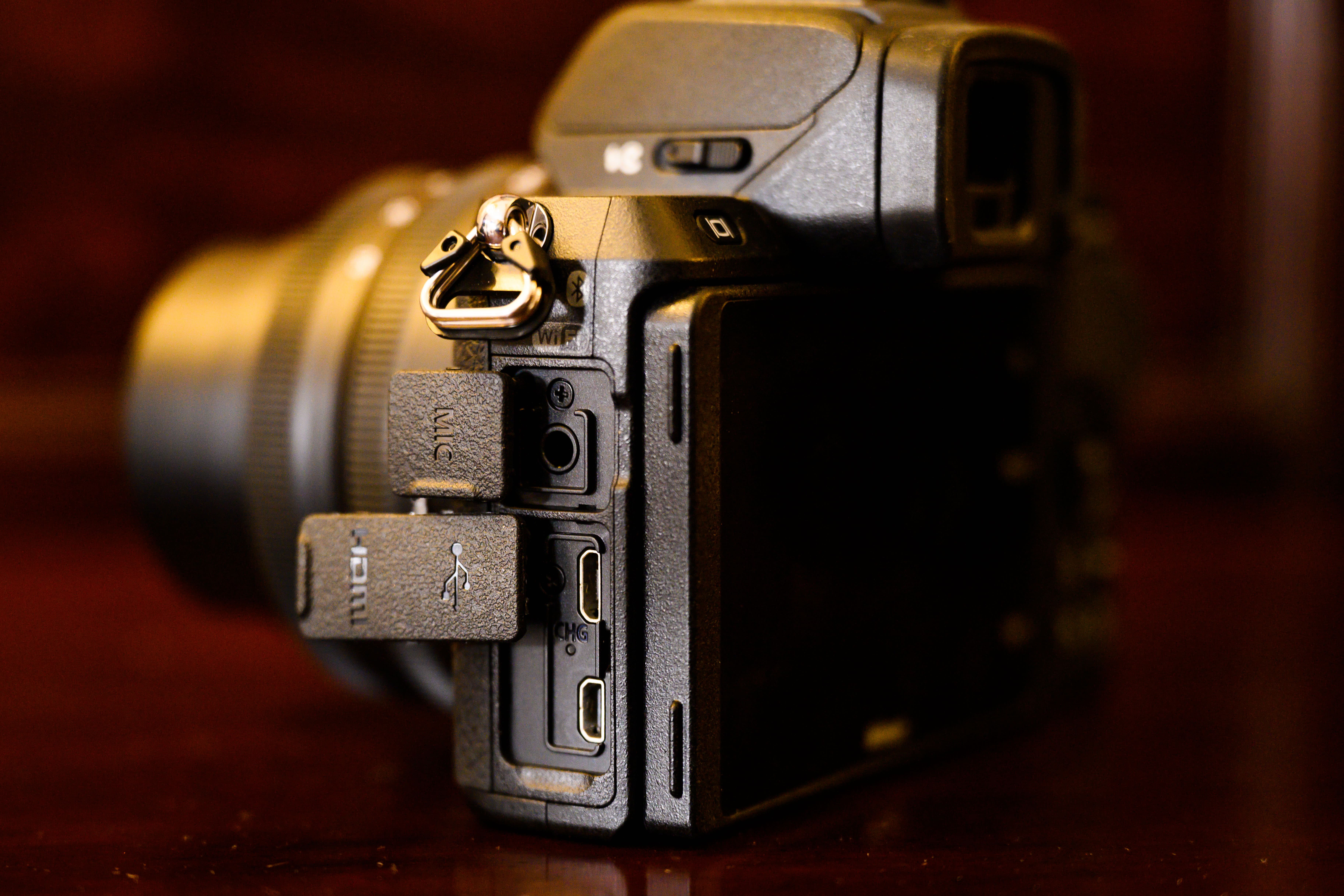
Keeping on the subject of power, the Nikon Z 50 doesn’t feature a USB Type C interface like you get on Nikon’s full frame Z-series models, though it does facilitate in-camera charging via its Micro USB port at the side.
As we’d expect, Wi-Fi and Bluetooth connectivity are built-in, with Nikon’s free to download SnapBridge v2.6 app available for both iOS and Android mobile devices.
Nikon Z50: Build & Handling
It’s difficult to appreciate the dimensions of the Nikon Z 50’s body in isolation. Viewing it up against the Nikon Z 6 and Z 7 or other mirrorless cameras gives you a much better impression of its size. One of the first things you notice when you pick it up is how comfortable it feels in the hand. Although smaller and lighter than the Z 6 and Z 7, we again find ourselves applauding Nikon’s designers for making a mirrorless camera with one of the most satisfying handgrips of any small mirrorless model on the market.
With a strong magnesium-alloy top and front panel, the Nikon Z 50 feels well made. If you close your eyes and handle Nikon’s three cameras in its Z-series, you can identify the Z 50 by feel alone. Though it’s robust and well constructed, it doesn’t share quite the same muscular, weighty or professional feel as its premium full-frame peers, but then again this is to be expected at its price point.
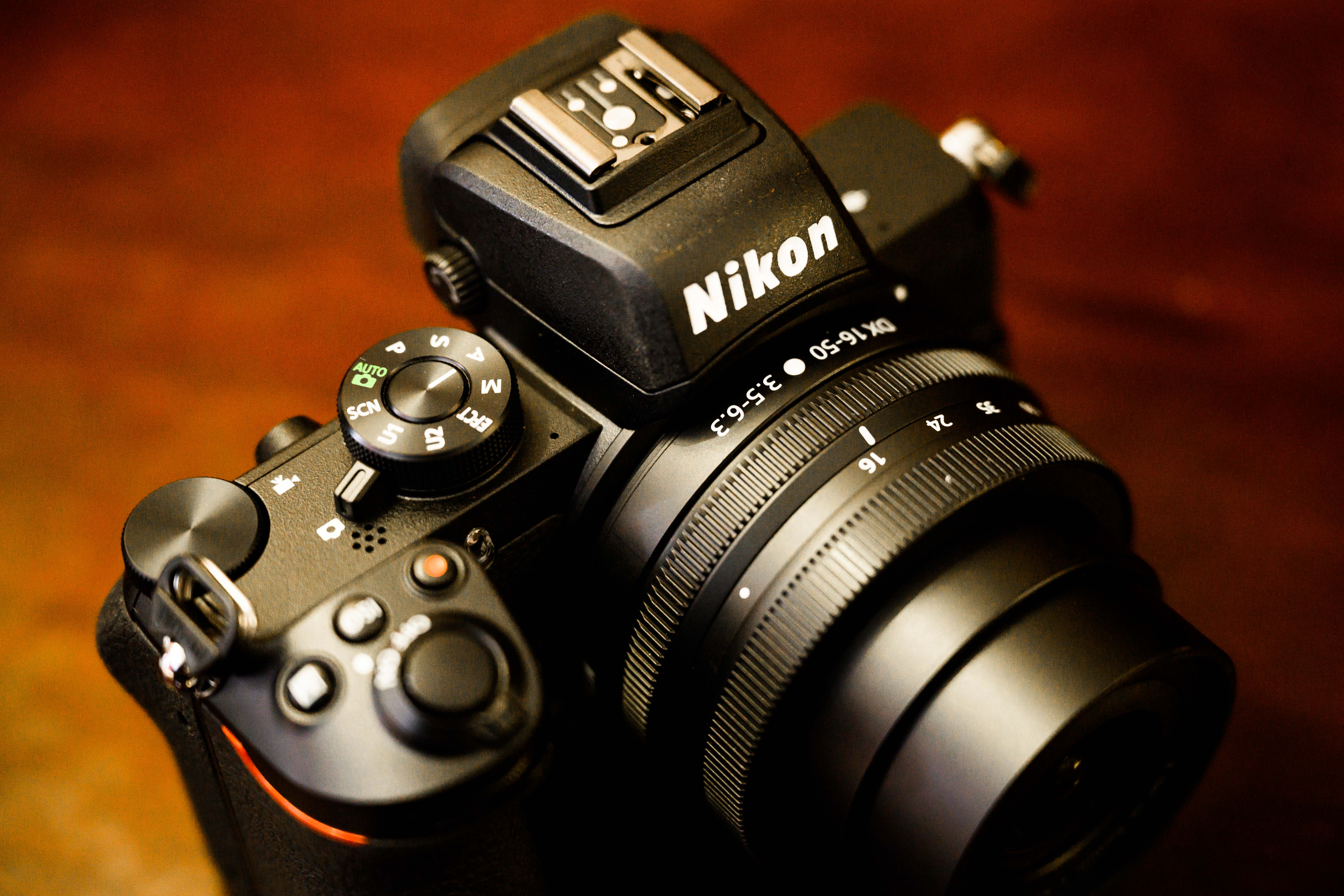
The Nikon Z 50 has a simplified top plate. The mode dial is located where the top plate OLED panel is found on the Z 6/Z 7 and the switch around the mode dial lets you change between shooting stills and video in an instant. Movie record, ISO and exposure compensation buttons are all grouped together behind the shutter button and the front and rear dials are perfectly positioned for intuitive control of exposure settings.
Beside the lens mount there’s a pair of customisable function buttons, with the option to load frequently used settings directly from the ‘i’ button at the rear. With no joystick it’s just like Nikon’s entry level DSLRs in the way the d-pad is used to shift the AF point around the frame. The touchscreen is extremely responsive to light touches and lets you navigate the main menu with great accuracy.
Nikon Z 50: First impressions
At the time of writing this first look we’d only spent a few hours with the Nikon Z 50; however this was long enough to establish that Nikon are really onto something with their latest release. The Z 50 manages to preserve the look, styling and excellent handling characteristics of the Z 6 and Z 7 in a lighter and more compact body. It goes without saying that the way a camera handles and operates is hugely important, and the Z 50 feels extremely comfortable to pickup whilst not being too fiddly to operate.
It gives us a good clue as to where Nikon’s DX-format line up is headed and how future models, whether they’re more or less advanced, might look. Although Nikon hasn’t officially said so, we sense this could be the beginning of the end for Nikon’s DX-format DSLRs.

My only reservations are the Z 50’s lack of USB Type-C port and fairly restrictive flip screen, which isn’t any good for low or high angle shooting when shooting in the portrait format. In all other respects the Z 50 has tremendous promise, and what with it hitting the market as such a competitive price, it looks set to give other popular APS-C mirrorless cameras like the Sony A6400 and Fujifilm X-T30 a run for their money. Watch this space for our full review.
Nikon Z50: First DX-format Z mount lenses arrive
To coincide with the launch of the Nikon Z 50, Nikon has announced its first Z-mount DX-format lenses for the Z-series. The NIKKOR Z DX 16-50mm f/3.5-6.3 VR is a compact retracting zoom that’s equivalent to 24-75mm in 35mm terms. It features a Vibration Reduction lens unit in its construction to help eliminate handshake and allow users to shoot up to 4.5 stops slower than would otherwise be possible.
It also has a minimum focus distance of just 20cm and a silent control ring. The construction of the lens is made up of 9 glass elements, including one extra-low dispersion (ED) element to correct aberrations and provide excellent sharpness and contrast. To keep the lens as light as possible (136g), Nikon has used a plastic mount at the rear as opposed to more robust metal one.
The second zoom – the NIKKOR Z DX 50-250mm f/4.5-6.3 VR has also been made as small and lightweight (405g) as possible. It covers a 35mm equivalent range of 75mm-375mm and features a minimum focus distance of 50cm. Manual focus, aperture or exposure compensation can be controlled from its silent control ring and its Vibration Reduction system is effective to five stops. It too has a plastic mount, with filters and adapters being attached via a 62mm thread.
Nikon Z50: Availability and pricing
Nikon has priced the Z 50 and lenses very competitively, with camera and lens kits starting under £1000.
The Nikon Z 50 with the NIKKOR Z DX 16-50mm f/3.5-6.3 VR lens costs $999 / £899, while buying the Nikon Z 50 with both the NIKKOR Z DX 16-50mm f/3.5-6.3 VR and the NIKKOR Z DX 50-250mm f/4.5-6.3 VR costs £1259. The price of the Z 50 body is only $859 / £749, which is less than the Sony A6400 and the same as what you’d pay for the Fujifilm X-T30.

Have a look at our latest buyers guides, or have a look at our Improve Your Photography series.
Related reading:
- Nikon Z30 review – a worthy budget vlogger
- Nikon Zf in-depth review
- Nikon Z6III review: the best full-frame all-rounder yet?

